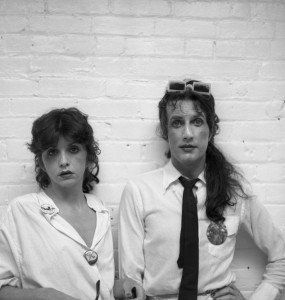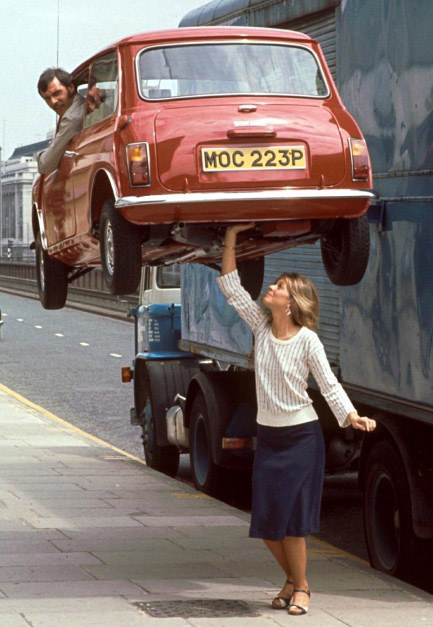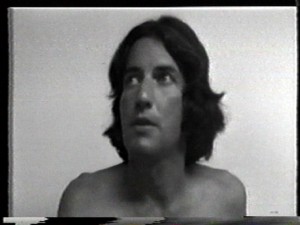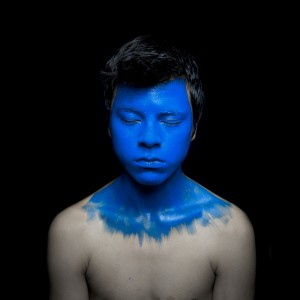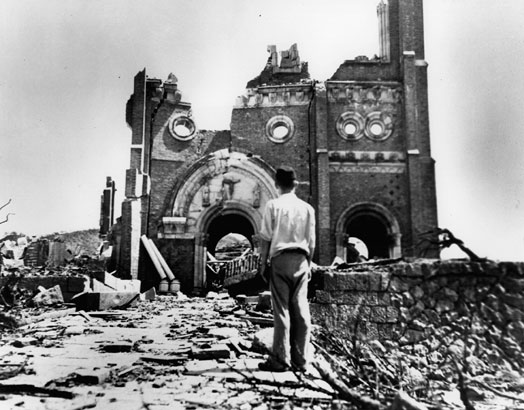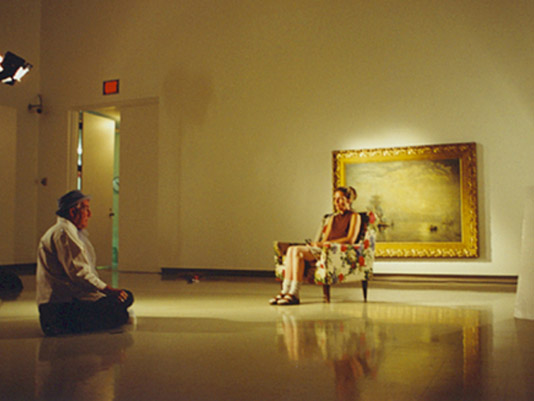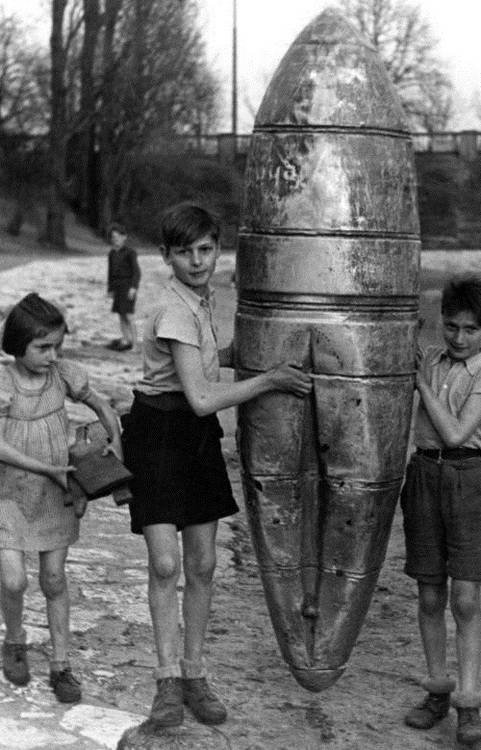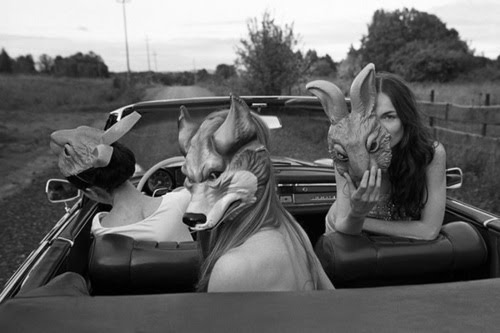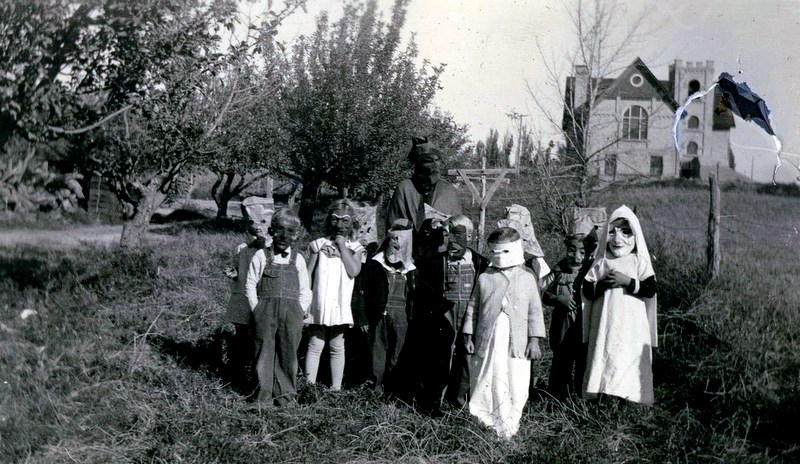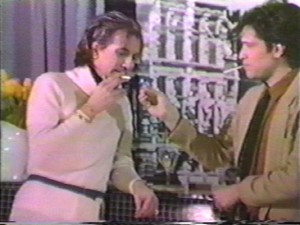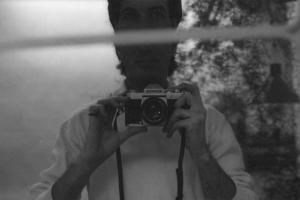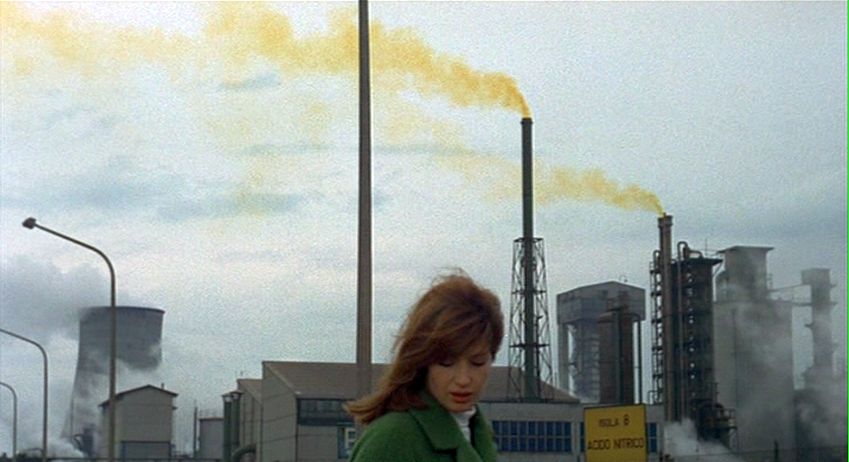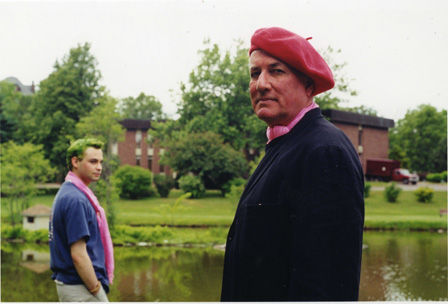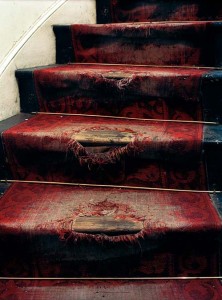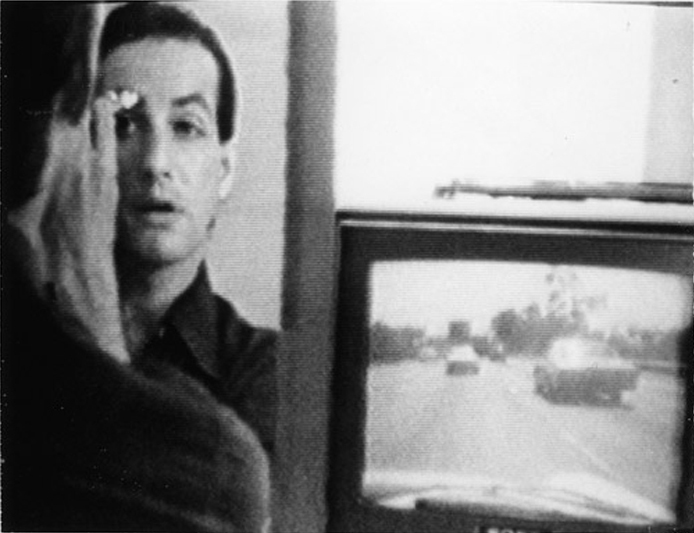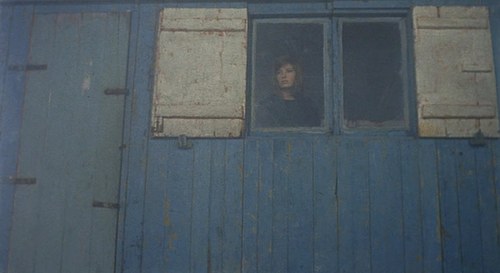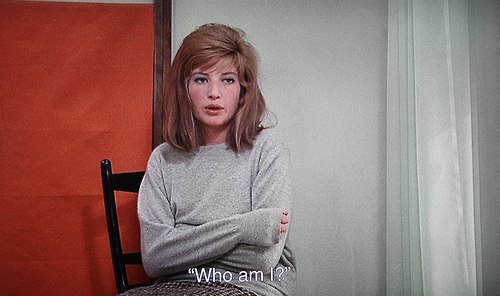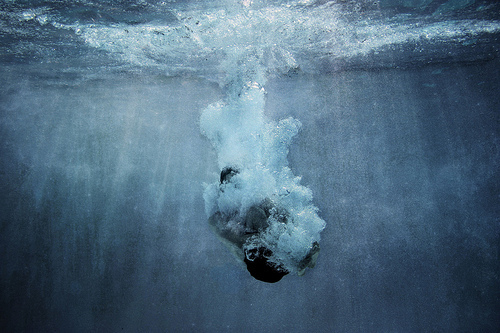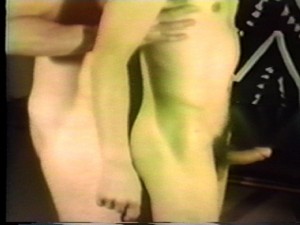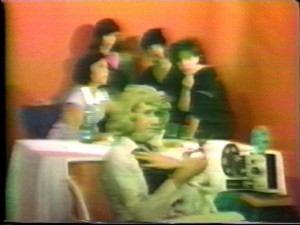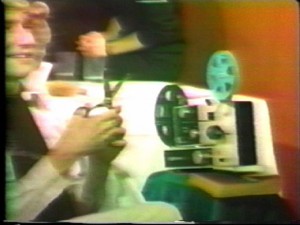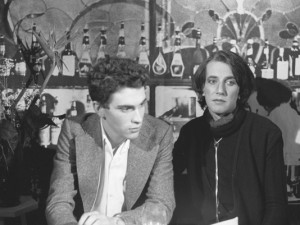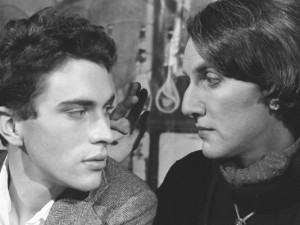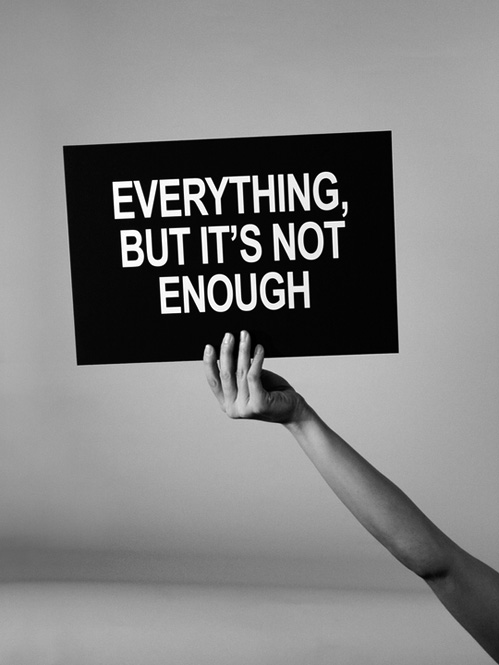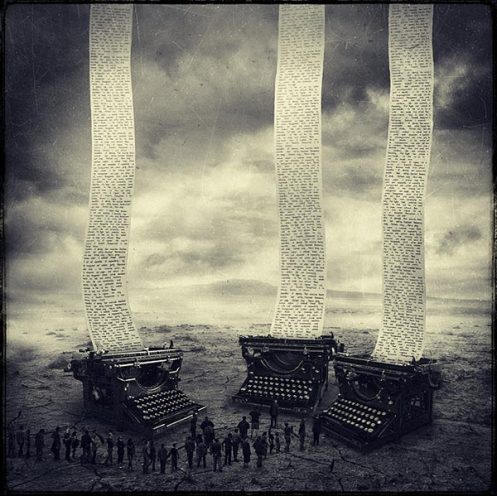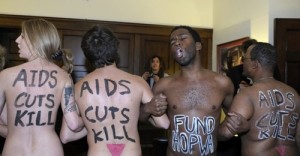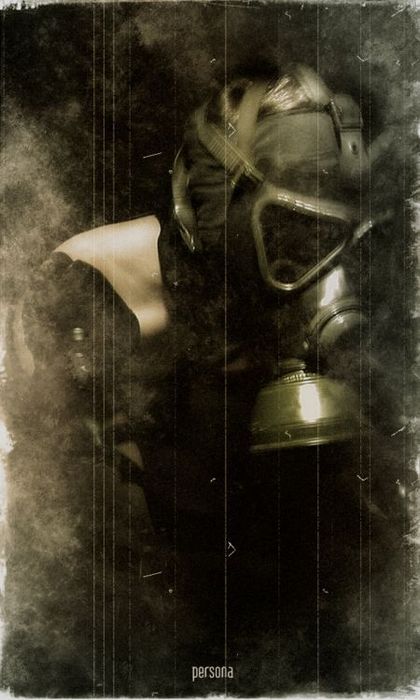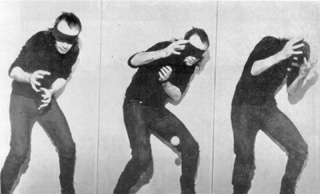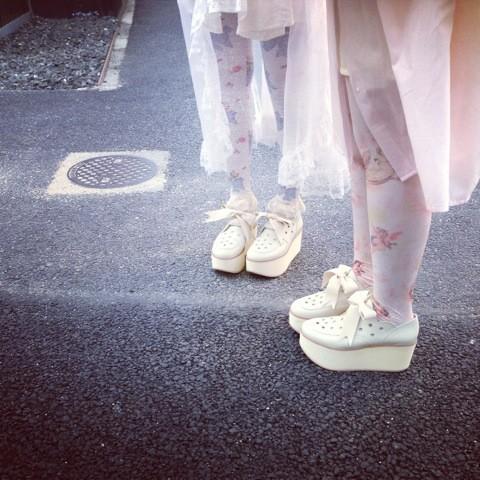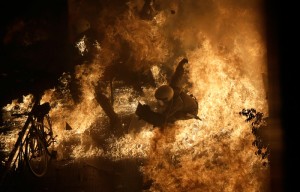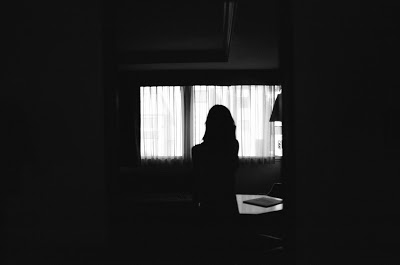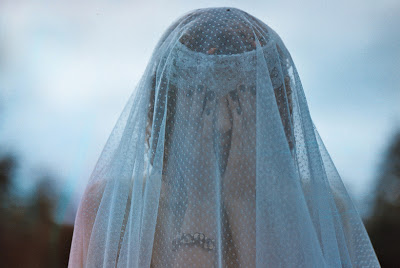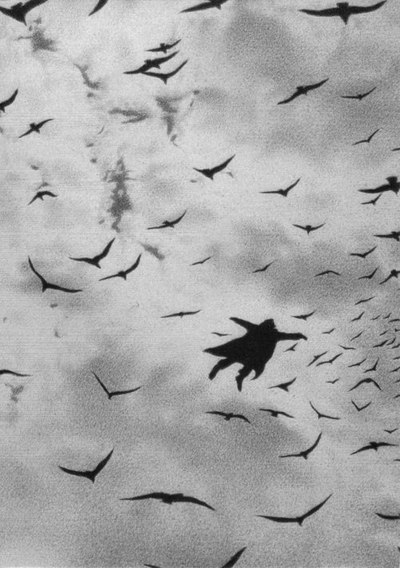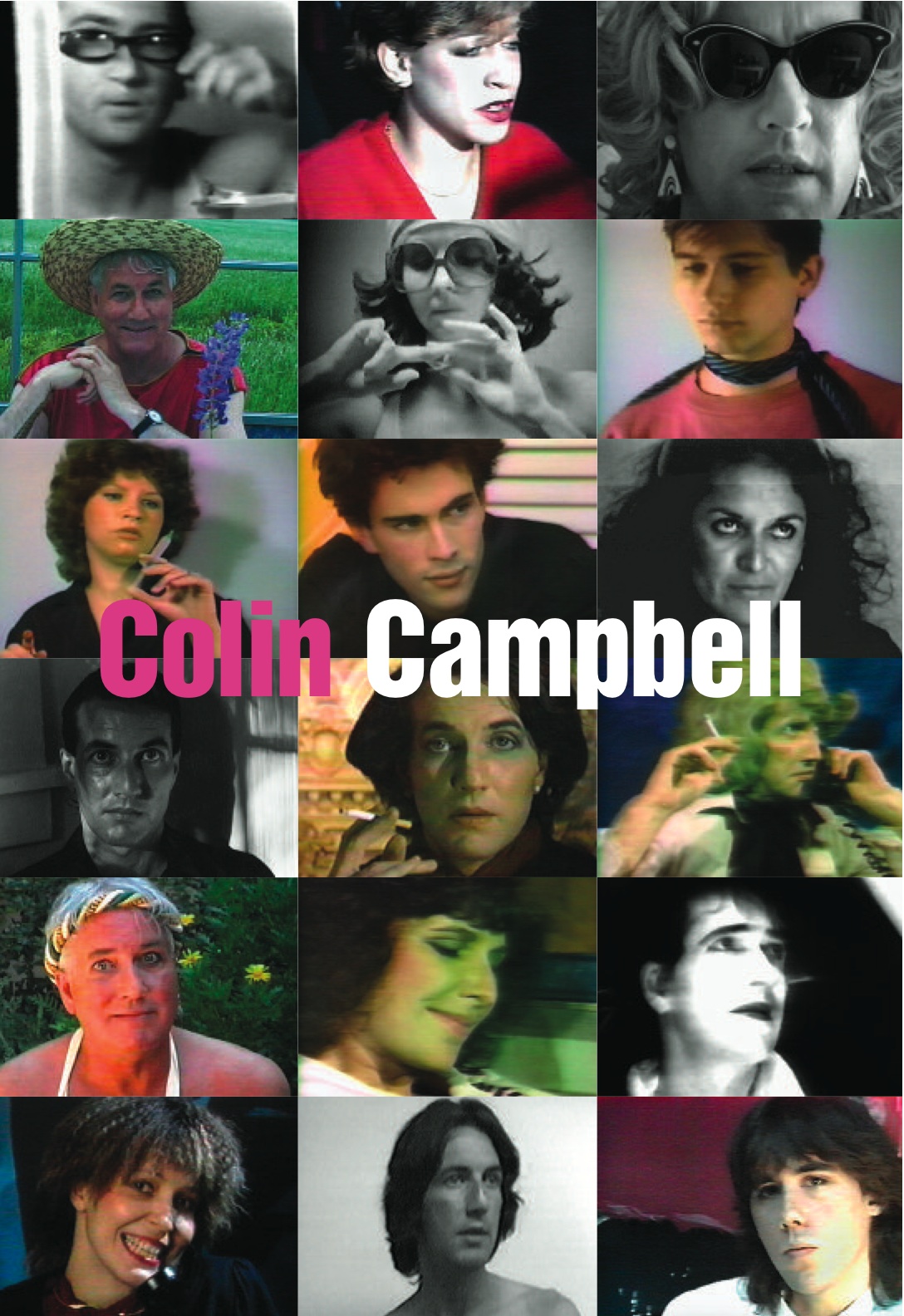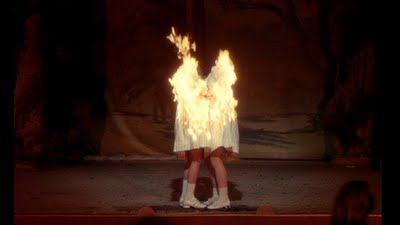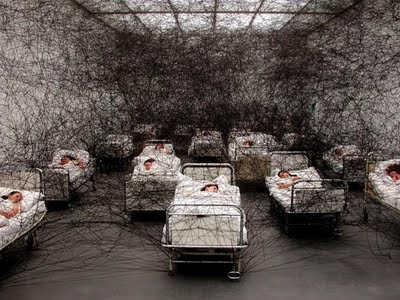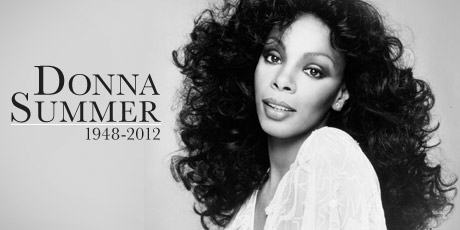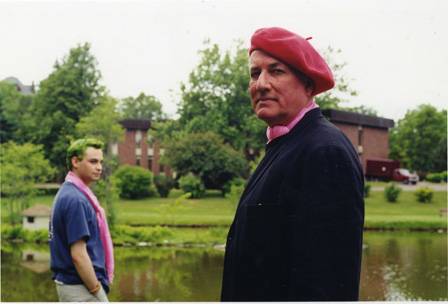
Colin Campbell (1942-2001)
Colin arrived one sunny afternoon on the phone. He was already dead, so the voice on the other end of the line wasn’t his. As usual, as he did so often in his work, he was throwing that smooth, measured voice, and allowing it to occupy someone else. Now it had turned into Lisa Steele, tireless co-founder (along with partner Kim) of Vtape, the artist’s video distribution joint here in Toronto. She was commissioning a series of new shorts responding to the work and life of video artist Colin Campbell. Was I interested?
I had met Colin exactly twice. Meeting was hello in a crowded restaurant (he was entertaining guests, I was passing through), our reprise a slightly longer exchange at an opening (was it?). He made the approach of course, throwing the charm spotlight on long enough to let some witty bonbon slip past. When I remarked on his killer tan he waved his hand between us and assured me it was bottled. I misunderstood immediately, imagining that his skin had arrived in a bottle, so I stood there gawping at him (my usual party demeanor) before he floated off on someone else’s breeze.
Can we speak of popular ideas or received notions, even here on the fringe? The usual uptake is that Colin lifted today’s headlines and turned them into tomorrow’s witful monologue. His tapes are heady with celebrity mentions and drive-by shootings after all, censorship lampoons and AIDS protests, all signs of the times, right? And if those weren’t evidence enough that the news ticker’s heartbeat ran straight up the mainline of his work, there were even a pair of movies made at Toronto insider hotspots which not only celebrated clubhouse passions, but became part of their legend. Dishing the evidence in weekly installments before the knowing in the very same venue seemed icing on the avant cake. But as I felt along the seams for a way inside, I couldn’t help feeling that his present-tenseness was another mask, and that he was more properly understood as a citizen of the 1950s, with its scientific infatuations, its cold warrior atomic secrets, and the birth of television, which Colin replayed in his own, smaller-than-life, home-movie fashion.
Months later Lisa’s program The Colin Campbell Sessions passed in a haze of good intentions, reminding all of us that the eulogy machines of Bill Gates and Steve Jobs ensured only an accessibility of first world production. Did the stone masons tasked with graveyard epitaphs ever carve in error? Produce indifferent scripts on grey days of inattention? Each onscreen offering was given an emotional free ride because Colin had died only a year before, suddenly and tragically from colon cancer. Within a few months of diagnosis it was over, there was not even time to spend his last half year (which doctors warned him was all the time he had) to fill his new, beautiful, writing paper with letters to friends. Do you remember when? This is how he planned to spend his last months, penning farewells. Now that work would be left to strangers.
From Nelson Henrick’s True Lies or The importance of Being Colin: “Immediately after I learned of Colin Campbell’s death, I went shopping. October 31, 2001 was my last day in Canada before leaving for Argentina for ten days. My partner’s birthday would occur while I was away: I needed to buy him a birthday present before he came home from work that night. So there I was, walking to a bookstore, sobbing to myself. And I thought, ‘This is a very Colin Campbell moment.’ I could hear his deep and pause-inflected voice slowly saying, ‘After I heard about Colin’s death, I went shopping.’ And this made me laugh, and then it made me cry, because what Colin gave us is the ability to detect ‘Colin Campbell moments’: these times when the serious events of life become burdened by the spectre of the ridiculous.”
Cold war moments provide deep background and improbable genealogies for the new art of video: the Korean War forces the Paik family to seek shelter in Japan. A dozen years on their number one son is humping his way back from the Sony warehouse in New York with the first “portable” camcorder in a box on the seat beside him. When traffic stalls to allow Pope watchers a better look, there’s plenty of time to unwrap the new machine. When he showed the results later that night at Café a Go Go, video art had found its primal scene. Colin was one of the first to claim this inheritance, plugging in when “portable video” required serious muscles to haul gear around.
In the old days of video art, editing meant taking out a razorblade and sawing through a ribbon of tape, leaving an ugly scar in the middle of each frame. As a result, editing didn’t happen all that much. Sound was funneled live into a microphone nipple perched on the camera, ensuring maximum line hum and glorious mono. The image was grey and white and soft, so very soft. But this was the portable video camera that was going to lead the revolution, that was going to put “television” into the hands of “us,” and with our brave new pictures we were going to take down the Man, the establishment, the five corners of the Pentagon, the racist Pigs, the empire State, you name it. Big dreams for a low-fi medium. Colin played it closer to the chest, as usual, in his one-take, basement productions. He had trained as a sculptor, made some large inflatable abstracts down in Berkeley while the world was busy ending all around him, and then took the first job he could get, teaching art in the modest backwater of Sackville, New Brunswick. Their underachieving football team had enough bake sales to buy a video camera so the coach could figure out what was going so terribly wrong, and Colin was able to borrow it in the off-season for his charming, no-frills production. Sackville, I’m Yours (1972) was Colin’s first tape, and a touchstone for much that was to follow, both for his own prolific musings, and everyone else’s. He played the first of his many personas, “Art Star,” a legend in his own mind, in the midst of (sigh) yet another media interview. When will those reporters ever stop bothering him?
Give a man a mask and he’ll tell you the truth said Wilde Oscar once, in a moment before the law fit him with a mask which changed the face beneath it. Colin was never short of masks, which he recycled to great effect in serial, star-driven turns which saw him deepen the divide between acting and performing. He liked to begin each day by re-arranging his furniture, a tic he shared with his older sister, though they didn’t discover this about one another until late in their lives. When he was a teenager growing tall in small town Reston, Manitoba he would invite a few chosen handsomes, his and hers, to sip Cokes with the drapes drawn and coloured bulbs creating ambience. His furniture kept turning into sets, friends became performers, last night’s whispered confidence arrived as today’s script.
His Cold War rearing was marked first of all by the nuclear arms race, never before did the possibility exist that everyone everywhere could be destroyed. Perhaps it comes as little surprise that despite the tone of gentle humour and low-key camp that pervades his work, death is everywhere. It occurs suddenly and unexpectedly, from anonymous drivers and jealous co-workers, accidental plotters and strangers. Colin unleashes his torrent of endings so amiably it’s sometimes hard to remember, by the end of the tape, that anyone has passed away at all. As Steve Reinke once remarked, Colin is at his most humorous when he’s talking about death.
On-camera, Colin preferred a mask of see-through drag, where he could open himself to the slings of outrageous misfortune as s/he lost her manager, band, husband or daughter, all the while stalked by lechers and killers. Part of Colin’s teaching and trace, the way he has marked me, is his great gift for lightness. How else to bear up, to weigh in, to hold forth — on these weighty matters, this impossible life, the one I held dying in my arms — except by making him so very light? Then, at last, it would be possible to say even the most difficult, the most impossible thing of all. Good-bye.
In her seminal essay “Notes on Camp” (1964), Sontag writes that the camp character refuses depth or development, from the first appearance to the last there is no further insight to be gained, no hidden trauma at last revealed. Is it too much to say that the camp persona is an atomic character, that s/he appears all at once, in an instant, a flash? Colin’s beguiling personas, whether Art Star, or the three sisters: Mildred (aka The Woman from Malibu), Robin (the suburban innocent who achieves a moment of underground musical success), and Colleena, (a breathless, performance artist) all deliver their personalities at first glance. While they are occasionally carried up in storied inventions, their fundamental character never bends or changes, they don’t show us more by appearing more often. The camp masks that Colin reaches for are atomic characters who appear in an instant, a flash, like the atomic bomb itself.
The picture of the atomic bomb most of us carry is the issue of careful grooming and manufacture. It is not Little Boy or Fat Man but Able, the bomb which exploded off the Bikini Atoll in July 1946. It was the largest media event ever convened, and provided spectacle fodder for the fledgling medium of television. Because of the required distance from the blast, the pictures produced were abstract, even picturesque, and so very clean and tidy. Like most of the pictures which surround us, they were not made in order to show, but to conceal. What is missing from these pictures? This camouflage? The bodies of those burned and disappeared in Hiroshima and Nagasaki. And it is exactly the body which returns when artists take up their own video cameras, refusing the televised spectacle of state camouflage, and returning to the collective repressed trauma of destroying the citizens of two Japanese cities.
Colin is not alone in performing this act of grieving for those never met. And neither is he unusual in using the means at his disposal, a local happening, a beautiful face from last night’s gig, a visiting performance artist, a friend who needs a little pick-me-up. Hey, what are you doing this weekend? Do you want to come over? I’m going to rearrange the furniture and make a video. Again and again these lighter-than-air scenes move towards a terminal point. And if he permits his masks to speak more than occasionally from beyond the grave, it is because it is the voices of those burned up in an instant, vanished at what they used to call Ground Zero, who are speaking through them. The mask of lightness arrives to carry whatever is impossible to bear. Just as the mask of the local appears to disguise the faraway truths, the deep wounds of empire.
Harold Edgerton was the inventor of the flash of flash photography, and then those too beautiful pictures so many of us have in our minds, of slow-motion liquid drops falling onto surfaces and exploding with a once-invisible grace. His work with flash photography was instrumental in the development of the atomic bomb, it became part of the triggering mechanism, part of the puzzle which had kept scientists locked out of the atomic world. How strange that his ultra-slow-motion movies of milk drops so closely resemble the atomic blasts that his invention made possible. And that Colin himself appears as a flash photographer in Disheveled Destiny (2000).
As I rolled through the hours of tape he left behind, I became haunted by an image which appears at the end of his Women from Malibu sixpack which featured Colin as a blond-wigged, sunglassed incarnation who spoke one. Word. At. A. Time. Colin’s drag persona appears as a stunned witness of catastrophe in the afterburn of the bomb. She wanders the empty ruins of the image empire, appearing always in small, closed rooms, talking like she has all the time in the world, with a toaster on every table and a steady drip of slow-motion stories which always seem to wind up in death. At the end of this six-part series, she wanders into the desert, ostensibly in search of the pony skeletons her dead husband collected, which lay scattered still about her basement. It is a nearly unique moment in Colin’s early work, because here the camera is out of doors, and instead of the steady run of talking close-ups, there is no talking here at all. In the face of her inevitable death, which she has decided to walk not run towards, there is nothing left to say. The wind blows, she pauses, and then she strolls away from the camera, and from us, a figure growing ever smaller. This is the first time we see all of Colin, the blonde wig tussled ever so slightly in the wind, the high heels stepping gingerly across the desert. When I saw it for the first time I thought: oh, he’s coming home. Or simply: home.
The atomic characters of camp, the flash photographer, the atomic desert. These are the three figures which underlie so much of Colin’s work. And of course there is the splitting of the atom itself which produces the bomb, and this is a split which Colin replays in his incessant gender bending, or in a movie like True/False (1972) in which he offers a list of personal declarations (I snort coke. I collect pornography. I recently attempted suicide.) followed by the words: True. False. Which is it? Well, after the atomic blast, he offers us an image of fissure and rupture, of the two in one, again and again. The atomic body is also the queer body, folded over, bent, turned in multiple directions, at the same time.
The division of the atom, the two selves, the image and moi. In Real Split (1972) a photographic close-up of his face occupies one half the screen, while his face occupies the other. In Janus (1973) Colin makes another early stab at non-narrative reflexivity (mercifully abandoned after this effort) with an 18 minute fondle of a life-size photograph of his naked self. He is also naked, I think it was a rule then, no standing in front of the video camera without your clothes on. And a way of saying: this body is a picture. Like the people vaporized by the bomb, turned into shadows.
In 1974 he moved south into a New York loft, and inspired by its architecture, he recast it into narrative, playing all the parts himself. The atomic divide continues here as well. In I’m a Voyeur (1974) he spies on himself, in Hindsight (1975) he produces a figure against the ground of other’s stories, while in Secrets (1974) he unveils a small proscenium space with curtains opening and closing the action, offering a confessional portal and the staging of subjectivity.
In the more fully realized dramatic scenarios which followed, he cast his internal division out amongst friends and familiars, allowing others to take their turn as ventriloquist foils or costumed reversions of themselves. He invited them to don a mask and embrace their atomized, divided personalities, projected outwards and available for even casual viewers, at a glance, in an atomic instant, a flash.
After retiring from the hectic video world and the endless catering which his increasingly sophisticated long forms required, he wrote a pair of novels, both unpublished, and then began his “second period” of video making. Here he reprised his earlier characters, and set them into dialogue with previous incarnations, excerpting moments from earlier tapes and having prior versions of himself chat with a much older, but no less dapper-in-drag Colin. In these tapes he is multiplied (playing different parts, confronting himselves in the present, and again in the past). Alongside his familiar embrace/division of man and woman, he adds the divide between then and now. I am and I was, both together now, in conversation.
If there is a stunned witness quality to so many of Colin’s portrayals, a devastated attention to the details of a moment in the car, or lunch for a daughter who never comes home, it is because these details arrive to fill in the gap, to take the place of what is not there, to perform the work of mourning. His campy melodramas, his non-passing drag, his sometimes excruciating decisions to cast friends in roles where we watch them attempt to dish his smooth lines through a haze of awkward self-awareness, all this is testament to the difficulty and necessity of mourning. And if he kept it all so very, very light, it is because his atomic secrets were so very dark. Like what, for instance?
After the second world war there was a dramatic growth in American foreign business activities, accompanied, as usual, by expansions of the empire. There are too many examples to include, but this one was pivotal. In 1953 Iranian Prime Minister Mossadegh was overthrown and killed in a joint U.S. (CIA) and British operation after announcing plans to nationalize the British-owned oil monopoly. The coup restored the Shah to absolute power and began a period of 25 years of repression and torture, with the oil industry being restored to foreign ownership: Britain and the U.S. received 40%, other nations 20%.
The Nevada Proving Grounds, just 100 kilometres from Las Vegas, hosted more than 900 nuclear tests, including 100 above ground. Tourists came to Las Vegas so they could watch the mushroom clouds from their hotels. It was sold as spectacle and a marvel of modern science; the fact that the government was systematically poisoning and killing its own citizens didn’t come out until much later. The Radiation Exposure Compensation Act of 1990 has paid out to more than 10,000 Americans who were injured or killed because of these nuclear tests.
The role of television was to provide the rationale for an increasingly open and interventionist foreign policy. The result was an explosion of documentary programming, particularly in the 1960s, and an increasing emphasis on underlining the Communist “threat.” Little surprise that many of the producers and correspondents began their work during the second world war. Television became war under another name.
The cold war and the cool medium. In contrast to globalized broadcast and the reach of empire, artist’s work offered local, resistant strains of non-commercialized image production. And in place of the globalized broadcast village, Colin set to work creating a community, going out night after night, drinking and dancing and attaching himself to art bands and nights that never quite ended. And some of these scenes were laid out in front of the video camera, masked and masqueraded and plumped in front of the glassy stare and asked to talk. It all seems so local, particularly now when these once glam denizens are getting on themselves, or have already joined Colin in that other placeless place. But even in the many years when his perfect skin must have assured him each morning that he would live forever, Colin was haunted by the dark truths of empire, by the corpses which lay beneath all that clean science, by the militarized technologies that ensured a steady upgrade of portable equipment. In his very private reaction shot to the harsh dichotomies of the cold war, Colin’s life was lived in stereo. He demonstrated this important truth: that it was possible, even necessary, to live two thoughts at the same time. Not either/or but yes and yes.
The movie I am trying to make about all this is called Fascination, and it’s framed by pictures of the (nuclear) desert, an iconic location in the western imagination, whose primal scene might rest somewhere in the pages of Exodus where the tribes of Israel are cast out of Egypt and forced to wander the desert. The desert is not a place of stories and destinations and arrivals. Instead, it is a site of wandering and trial, and if this story still speaks to us today, perhaps it is because each of us has also experienced a desert in our own life, a moment when the old truths no longer hold, when we no longer know how to talk or touch. The desert is a picture of a person, the subject of this biography, this Colin Campbell, but it is also a picture of a movie which proceeds by wandering, which delights in being lost, taking up tangents, following leads and losing them.
For now my work on this post-biography continues. It takes a long time to say yes. Longer even when the yes belongs to someone else.
Colin Campbell interview by Peggy Gale (1982)
(Originally published in: Parachute September/October/November 1982)
Peggy Gale: I’ve noticed a trend in the last year in video. I’ve seen six or seven tapes in the last month that have not been talking heads, people delivering lines. Like the tapes from New York at Gallery Quan, nobody said a word. It was all music and overlay. And at Art Metropole — Les Levine, Paul Wong, General Idea — it’s all images with voice-over. It seems like a split is already going on, where content is on one half of what’s being produced and visual assault is really on the other side. It plays to the thirty-second attention span that everybody has about everything. It feeds that. It’s a sort of a renaissance of the technology of video all over again. Only this time, what is accessible to artists closely approximates what’s possible to do in a commercial television studio. Do you think that consumerism per se is one of the contents? It’s certainly become part of the form. It’s attractive, seductive… but I wonder whether the artists are actually commenting on that or just welcoming it?
Colin: I think it’s a bit of both. The progress of video outside the art ghetto has been amazingly slow. The majority of work produced is shown in an art context. Pay TV is here, broadcast TV, cable TV, whatever. Video has moved into nightclubs and rock clubs, but the kind of work that has moved the most successfully in that direction has been image-conscious video as opposed to narrative. Video also has a history of being a tool that multi-media artists use, go in and out of, so there are people who do performance and write books and do the occasional tape… It seems that kind of work is being picked up on. It’s like the renaissance of video imagery again, now in its new highly technical stage. It’s glamorous again. The images are fabulously glamorous again, seductive and rich and varied. What I see about a lot of that work is that it still does convey a sense of awe. You don’t see anyone pulling the strings, all you see is the results.
Peggy: Do you think it’s a return of the literate?
Colin: Certainly the last two scripts I’ve written have demanded much sharper attention than my previous work has, and refer more to things outside the art context than my previous work. But that’s the demand I made on it to keep it interesting for me.
Peggy: Earlier you were talking about seductive images, and that so many tapes are non-verbal but very heavily loaded with content. Yet we’re also saying that their very strength lies in a narrative structure at the bottom. To me, the new work that is really successful is using both. Given that colour is pervasive now, you have to have both those elements. When people first began to use colour, I think almost everybody was dismayed to find that although the work was prettier, it looked stupid, whereas black and white could be extremely extended in time, but it never looked stupid. What I’m searching for, is to somehow isolate this seductive presence physically, the use of color, the new approach to time and structure, and the narrative underpinning that gives it substance. When you have all of those together, as I think Dangling By Their Mouths does, for example, you have another order of videotapes that is far more than television, and more than film too. It really is a different form that doesn’t exist elsewhere.
Colin: I’ve always found colour in video or television unnatural. It’s electronic, and none of those colours are real anyway, and then there’s the inherent flatness of the video image. You don’t get that richness of depth any more in colour than you do in black and white. In fact, it seems even flatter in colour somehow. So when I approached Dangling I wanted to say, “This is a colour tape,” as opposed to, “This is not a black and white tape.” So I used slide backdrops for almost the whole tape, as a narrative structure, but also to try to get a diffuse kind of light that was somehow richer than on-scene location shooting could ever be. I also used large black and white photo backdrops in the tape in a couple of places, again as a narrative device, and also to say, “This is an approximation of reality.” In Conundrum Clinique I used either strictly flat, bright, grid colours for the background, or slides again.
Peggy: It seemed that you came to colour at a time when everybody was working with colour. So there was a sense of inevitability about it. It wasn’t as if you had struck out on your own. There had been people working with colour for three or four years already, but those people were working with colour as an ideological decision at base, whereas by the time you decided to move into colour it was because of something quite different. The same shift seemed to happen for a lot of people….
Colin: I started to appreciate colour in film when I saw Antonioni’s Red Desert, which was his first colour film. It was mostly shot in industrial settings, grey, white and red dust. At points there were real moments of colour and when there was colour introduced then it seemed to parallel a heightened sensitivity or awareness of the characters involved in the film. In the first colour tapes I saw, on the other hand, I was very unmoved by the fact that they were in colour. I thought it certainly was something for a black and white tape to come up against, but I’d seen hundreds of colour films before Antonioni’s and that was the first time I saw colour could be a vehicle as much as a fact. I was in the process of making Bad Girls when I switched into colour, mostly because of accessibility to the equipment. But when Bad Girls switches into colour, nothing much is enhanced.
Peggy: Yes, it not like Dorothy arriving in Oz.
Colin: Right. So I started to think about how to use colour. Sets in video don’t look like they’re supposed to look, which is why in He’s a Growing Boy, She’s Turning Fourty, which is my first full colour tape, I use mostly black and white sets and blow-ups, because I want to reduce the colour to where it really mattered. I did try to keep the tape mostly in black and white and accentuate some developments in colour, particularly the last shot, which is very loaded with colour. The camera is set askew. So it’s more magenta. That was the first tape where I tried to manipulate colour consciously. And with Dangling I wanted to make it as lush as possible, feeling that colour can do that, that it’s a real element to work with.
Peggy: Do you think my dissatisfaction with other people’s transitional tapes is that they haven’t realized that they’re transitional? They haven’t taken responsibility for the colour, but are simply using…
Colin: I think that’s really possible. Why just accept colour as a fact, because it is an emotive force and why not try to use it as one? It can be specifically directed, consciously, as opposed to unconsciously.
Peggy: But what about the other issue which is implied by colour, its commercial reference? It seemed to me that the reason you didn’t move into colour earlier, when you could have, was that you were interested in the elegance and intimacy of the black and white, and the kind of classic look of it. Classic photographs are in black and white and classic television is in black and white. You specifically were not interested in the commercial relationship to be brought to anyone’s attention. Now with your move to colour, you’re using colour for its emotive appeal. And are you still just ignoring the reference to television?
Colin: No, of course not. A good example is when I showed tapes recently at the Art Gallery of Hamilton. The first tape I showed was black and white, The Woman from Malibu, and when I was ready to show the next one, people asked, “Oh, is it in black and white too? Oh good.” There’s an expectation for colour now, and I think it’s hard to get away with shooting a black and white tape. You feel the same in movies these days…
Peggy: That’s not really the question I asked, because what you’re talking about is audience appeal, about audiences that are not looking very well. They’re simply sitting and waiting to be pleased. On that level colour has made the work more accessible, so colour can be a ploy to reach people who wouldn’t otherwise be bothered. Which is certainly good politics, because everybody’s talking about enjoyment. Everybody’s a consumer, and we’re a long way from conceptual art. But what I was really asking was another sort of issue, which is, is commercial television being addressed directly or indirectly by the kind of work you’re doing now? It seems to me you’re moving towards the possibility of the work not being seen as capital A art, but being seen as very unusual television.
Colin: I think that’s true. I guess what some video is doing right now is borrowing the best of the sensibilities of film and television, but there’s still a grittiness about video that talks about television. It’s not as seductive as film, not as palatable.
Peggy: Do you think that either consciously or unconsciously you’ve been working towards the possibility of broadcast with these recent works?
Colin: I can’t say. For about three years, at least, I’ve had an interest in reaching an audience outside the specific art gallery audience, which never seems to grow very much. That’s why I chose to make and show Bad Girls in a bar (the Cabana Room, Toronto). So what if they’re there for the band, they’re still there for the tape, too, whether they want it or not. I really felt that I expanded my audience and got very different kinds of reactions to what video was, from that audience. The response was both good and really bad, everything from beer bottles at the screen to people shouting “turn it off,” to standing-room-only and everyone saying, “Sshhh, there’s a tape on.” There were a lot of musicians there who generally never went to galleries to see tapes, who liked the motion of the tape. I tried to keep it short, and, you know, Perils of Pauline. In general, nobody said they were bored… For a long time artists said, “No, video isn’t television, it’s video,” and I think people are reconsidering that. I certainly am. I’ve always viewed broadcast television as not undesirable but impenetrable, and I’ve also seen we wouldn’t be given the chance to work creatively in a studio situation. I think that a lot of videotape being produced now cannot be just popped onto broadcast television and sit there very comfortably. But I think, yes, given the chance to do a production for broadcast television, my work would change, my ideas would necessarily alter in that process, and I’d love to have the chance to do it. So obviously I think something good could come of it.
Peggy: I wonder how the issues to be addressed will change as it becomes possible to access that audience? In Toronto, the narrative work is different now. I think there’s something different happening.
Colin: I think so too. For one thing, it’s a much broader cultural collage that’s being contained within the work. A lot of earlier video talked about the system of art and was quite formalistic. Even within narrative I think it kept addressing art issues, whereas now the work is much more out in the realm of common experience. Characters are identifiable now as real people.
Peggy: We are assuming that video will not become television but will continue to be something evidently different and acknowledged to be different. If you’re no longer going to be simply closed-circuit, what are the properties that you will try to bring out in your work?
Colin: The idea of intimacy hasn’t been explored in television. It would have to be altered in the way it would be done, but it could be very startling once it started to work, to be used in work that’s being broadcasted, not as video art, but as broadcast television. I think much more complex ways of getting a narrative across could be used, rather than the particularly linear way that most television works right now. I would assume that there’s a large number of people out there who can withstand a more complex layering of ideas… Watching television like the Olivia Newton-John special, I think that if an audience can be whisked around visually that fast in four minutes, then think if it had some content in it! Artists’ initial response to broadcast television has been, “Oh, great, we can put our work on and convert the unconverted.” Not true. Or they’ve thought, “Okay, well to be on broadcast television you have to sell out and become like television.” I think that’s not true either. Television doesn’t need that, it has enough people doing that already.
Peggy: After Dangling and Conundrum Clinique, how would you see the next step if you were moving towards broadcast as your next possibility?
Colin: What I’m specifically interested in doing right now is almost completely non-linear kinds of pieces, quite short, from ten to fifteen minutes. Maybe even five minutes. I’d like to produce work that’s about the thought process of producing it. Wouldn’t that possibly have an equal although different kind of impact than one which is all tidied up and strung out to be completely comprehensible? Our perception of the world is not a tidy linear process, and I want to investigate that. My idea of the next tape is hat it may be ten minutes long with six different characters who don’t relate to each other in any way. Seeing what happens.
Peggy: Do you see other people looking at similar notions?
Colin: In Rodney Werden’s Yes (36 minutes 1981) there’s that dissociative and discontinuous… there’s a huge cast in that tape that seems to have nothing to do with each other at all. It’s bound by the thread of an underlying narrative. I think that’s a real transition point for Rodney’s work, it’s s much more complex narrative style than we’ve been used o. He’s the first example that springs to mind.
Peggy: But you’re not conscious of being part of a trend?
Colin: No. But I don’t think you ever are, then suddenly four people come out with tapes simultaneously with new ideas that are closely related.
Peggy: Nevertheless, to know that there’s a not a conscious sharing of these issues is significant because it means that everyone’s going ahead by guess and by golly.
Colin: I agree with you that there’s some kind of turning point happening in video right now. Just at the point that video may be approaching an extremely broad sort of audience, it’s also becoming much more sophisticated and complex and demanding in another kind of way… But in just the last three months, people have been coming from Pay-TV down to Charles Street Video, and looking at tapes. “Never seen anything like this before, I really like it, don’t know what we can do with it.” Even that is such an unexpected response. They’re responding. So of course it’s going to influence people’s thinking.
Colin Campbell Interviewed by Kathleen Maitland-Carter and Bruce LaBruce (1987)
(Originally published in CineAction! Summer 1987 No. 9)
Kathleen Maitland-Carter: I thought we’d begin by finding out about your background. I know that you paint, but I’m not sure if you painted first and then got into video.
Colin: I was a sculptor for ten years and then started making video tape in 1972. What kind of information do you want?
Kathleen: Your early tapes such as Janus are more sculptural.
Colin: At the time I started doing video, it had just started to be used, primarily by sculptors, and it was used in its original format as an extension of body art and installation, so a lot of sculptors did start to use video, and then most of them didn’t stay with the medium, most went on to conceptual art and that kind of thing. But I stayed. So my early piece are quite sculptural, very formal.
Kathleen: How did the transformation come about, from doing more sculptural work to incorporating narrative?
Colin: The first five or six pieces are very formal, and then I did a tape, while I was teaching art at Mount Allison in New Brunswick, which was where I started doing video, called Art Star. And it was basically a rant about how awful Mount Allison was and what it was like to live in Sackville. So that was the first sort of narrative piece I did. That was the first time I spoke. And that was also the first tape I ever exhibited. So from there up until 1977 I did work that was mostly autobiographical, or focused on how I was interacting with the world. Then in 1977 I went to California and did the Woman from Malibu series, and that was the first really scripted material I did where I impersonated another person altogether and turned the camera away from me completely and I started dealing with external fiction as opposed to internal fiction.
Bruce La Bruce: Your work obviously has a lot of affinities with film – not only the narrative stuff you do, but the appeal to melodrama and the signifiers of “women’s pictures.” There’s also a move away, in your work, from an art-based focus to something maybe broader, less esoteric…
Colin: Are you talking about the recent work?
Bruce: The progression from your other kind of formalist work to more accessible work with dramatic monologues and melodramatic elements. You could almost identify some of your video work as one long melodrama – the Women from Malibu series or the Modern Love series, looked at as a whole, are like one long movie.
Colin: Yeah.
Bruce: I just wanted to ask about that and also why you don’t work specifically in film, why you’ve chosen video?
Colin: OK, that’s two questions.
Bruce: Yeah. (giggle)
Colin: The Women from Malibu series is a total of 90 minutes, but I think it’s still more easily identified with an art practice as opposed to filmmaking, simply because its structure is too quirky to be viewed in terms of film practice. But the later work, the work I’ve done in the 1980s, is more filmic. I’m getting back to much longer pieces again, and as far as I’m concerned, the piece I’m just editing now could have been shot in film. It could be a film. It’s quite long, about 60 minutes. But why don’t I work in film? I can’t afford it. It’s really simple. I’m sure you know better than me the problems for independent filmmakers. So for practical reasons I continue to work in video.
Kathleen: Film is very expensive, but with independent filmmakers – feminist, lesbian and gay filmmakers, black and Asian filmmakers – they find their community, and there are international circuits set up through events like festivals. So there is a lot of interesting film work being done. I think the difference with video is that the advent of video technology – porta-packs and so on – make it much more available to artists and cultural workers when it came about in the late sixties-early seventies, so it seems to have developed a stronger, more cohesive community. And because video is so recent, there’s a lot of women working in it as well, that’s why it has a strong feminist tradition. Whereas film has a kind of troubled history, especially ‘avant-garde’ cinema because it’s come out of a more formalist, masculinist tradition.
Bruce: Well, the whole ‘industry’ stigma around film, in which the more careerist, aggressive ones make it, seems to be more geared to a masculine discourse.
Colin: Yeah, I would agree.
Kathleen: Which is something that your video work undercuts. I wanted to relate all this to your work with drag. It seems a lot of portrayals of women by male transvestites are really misogynist. I think your work escapes that.
Colin: Uh-huh.
Kathleen: Have you ever been accused of…
Colin: Misogyny? No. Well, let me see, the first time I did drag was in The Women from Malibu. I was actually going to try and find someone to play the part and then I decided I could probably do the material best if I did it myself, so I went to the Salvation Army and I bought the wig and the clothes and jewellery and everything…
Bruce: Was that traumatic? (laughter)
Colin: No, not really. They probably thought I was going to rob a bank. Anyway, I dressed up and did her, and I thought it was just going to be the first ten minute piece, but it turned out, for me, she was a really good vehicle to discuss the culture of Southern California.
Bruce This is when you were living…
Colin: Yeah, in L.A. So she sort of took over for the nine months I was there (mostly doing research and then shooting the tapes). I never tried to actually disguise the fact that it was me or that it was a man, like, I kept my same voice. I tried to keep her fairly neutral and not campy, actually, because it never occurred to me. I knew that might be an aspect of it, but it never seemed to enter the material itself. I premiered the work in Victoria and I was extraordinarily nervous because suddenly, it’s that kind of naivete, you make a couple of tapes, you think they’re fine, then you forget you’re going to have to show them and be there. Show and tell. So I was quite anxious about it, but the students were extremely positive and there just didn’t seem to be any question about it being misogynist. So I don’t think it is. I don’t think the Women from Malibu is misogynist, nor do I think Robin, nor Anna in Dangling By Their Mouths. But I mean the question has come. Do you think it’s misogynist?
Kathleen: No, I don’t think it is. I think why it escapes being camp and why it’s not misogynist are interlinked, you know, what Susan Sontag wrote about camp, that the characters are never developed in it, instead they’re more iconic or fetishized, whereas you characters are really developed.
Bruce: I think the fact that you do use a neutral, masculine voice really is part of that. It puts you in the position, when you’re watching it, where you almost have no gender affiliation.
Colin: Yeah, it’s also not really sexual. I mean, again, it’s neutral, but there is no sexual interplay generally. My concern with all that material is about gender anyway, and stereotypical roles, and trying to address that as being a serious problem. I’ve never felt comfortable in any specific role in terms of sexuality or gender that I’ve been exposed to, which is why my work addresses that all the time.
Bruce: In her “Video in Drag” article in Parallelogram, Dot Tuer says that “Colin Campbell chooses to construct the feminine by banishing the masculine.” She was referring to your tape No Voice Over. What do you think about that? Do you think that masculinity is irredeemable in your tapes?
Colin: No, although I think what Dot wrote about No Voice Over is very accurate in the sense that I was trying to set up a situation where the communication between women is quite extraordinary, a kind of communication that it is mistrusted by men because they experience it themselves. Especially straight men. I guess I was trying to illustrate that my observation of women being able to express themselves to each other is always critiqued and under attack by men, and in the tape Dix-10, who’s mostly the voice off camera, his only way of dealing with, say, Mocha’s premonition about Miranda’s possible death, is to think she’s gone crazy, or that she’s hysterical, and he, in fact, undermines their ability to communicate what is really going on. So at the end of the tape it is not quite clear whether they’ve got it back together or whether he actually has split their form of communication so that they stop paying attention and Miranda does get on the plane and gets killed. I guess it’s a somewhat veiled attack on white hetero-male dominance in society. I was trying to show an alternative that I find very strong and important and meaningful, which is the relationship between women.
Bruce: Like in Charlie’s Angels. Someone brought up that connection, where Dix-10 is like…
Kathleen: Charlie.
Colin: I didn’t think of that until after I saw the tape for the first time.
Bruce: I think Charlie’s Angels is pretty amazing, situated as it is in the seventies and the way that pop culture identified feminism…
Kathleen: Women with guns.
Bruce: Yeah! Did you like the show?
Colin: I’ve probably never watched it. I don’t watch TV so much. But I think the major difference between my tape and Charlie’s Angels is that my characters never really seem to be in the male’s employ. They only work for him if they need the money and I always have the sense that they can and do say no.
Kathleen: It seems there’s a transformation in the kinds of characters that you’ve developed, from the Women in Malibu character, a lower middle class, California kind of ladies’ auxiliary housewife, and Robin in Modern Love, who is a kind of suburban, also lower middle class xeroxer, to the women in your most recent tape, I mean the class different is really evident. Why did you choose to start using these kinds of characters?
Colin: Because I think they’re richer, there’s more to do with them. I mean, the thing about Robin is that she can’t improve, I can’t sent her to university, you know?
Kathleen: You sent her on CUSO.
Colin: That was a good scam while it lasted. But generally I can’t see her changing very much. That’s part of her charm, but in No Voice Over there’s much more to deal with, the characters are capable of consciously exploring issues as opposed to Robin, who stumbles into them.
Bruce: Mmm. Although there is the appeal of accessibility of the middle tapes, I mean, I can see them being played in a lot of venues besides art venues. I think it’s a shame they can’t be viewed more broadly, because they have that kind of appeal.
Colin: Bad Girls was made specifically for the Cabana Room (the bar in the Spadina Hotel) that was my idea of trying to break out of the art ghetto. It was shown every week. I shot a sequence and edited it and dubbed it and then showed it on the weekend, I think that went on for about seven weeks. It was great because it really was a different audience, it was sort of an art bar, but there was a lot of musicians and others as well. So my audience really changed at that point. It was an attempt to get out of the gallery situation for one night only — a precious one-night-stand thing — into a much looser environment that was more fun. It was also to try to get rid of the notion that video tape by artists was boring and dry and had no humour and couldn’t deal with anything except “high art.”
Kathleen: How self-consciously do you employ humour? Does it just seep in or is there a strategy?
Colin: It’s a strategy. It’s one way to make your characters sympathetic, especially if they can laugh at themselves. It’s also a good way to get some kind of information across that might be just too heavy it you did it straight.
Kathleen: It’s a tactic used by mainstream, dominant film and television, to employ humour to conceal its ideology, like Police Academy, for example, or Porky’s. It’s usually really misogynist…
Colin: Right.
Kathleen: And I find when you start criticizing that, people say, “Oh, don’t be such a stick in the mud, it’s just funny.” They dismiss it. In a sense, you’re kind of employing that strategy. (laughs)
Colin: The Porky’s strategy. (laughs)
Kathleen: It seems very revealing, talking about gender, anyway. It allows the character to be sympathetic where some people might have problems dealing with that concept otherwise, about men dressed as women, or identifying with women.
Bruce: But it doesn’t always work, like Kathleen was saying about camp earlier, which I think your tape Bennies From Heaven is guilty of. For me, it’s your least successful tape, and that’s partly because there isn’t the character development of the other tapes.
Colin: Yeah, that tape is a real throwaway. The only thing I would say about it is that it was a reaction against the preponderance and insistence upon high tech and high finish tapes that look like they should be on television. I guess I did it to remind myself, as much as anyone else, that you can be very loose with video and do whatever you want as sloppily as you want, that there’s still a place for that.
Kathleen: It seems there’s less room now for a kind of low tech or sloppiness – with all the younger video artists there’s this real insistence on “broadcast quality.” Your last tape also had higher production values than your previous ones.
Colin: Yeah, although nothing much really changed in terms of equipment or technology between No Voice Over and the ensuing work I produced. It’s all shot on VHS (1/2” tape) except for White Money and The Women Who Went Too Far, which had a better camera. But I really think it depends on the piece. No Voice Over had to be done that way or it wouldn’t work. But I know that some people nearly feint when they see a glitch or some drop-out on the tape. It’s like, I never see it, I don’t care.
Kathleen: It seems really unfortunate. It seems like almost a rejection of the history of video art, I mean, something about video that I find so appealing is its opposition to other kinds of media and television, which used to more evident in video production. It seems people are now going back to embracing narrative conventions.
Bruce: Well Colin, this interview is for the comedy issue of Cine-Action! So maybe you should tell some jokes or be funny.
Colin: Why did you choose me for the comedy issue?
Bruce: Well, the thing I like most about your tapes is that lot of the work is pure comedy coming from a comic tradition, like, from Jerry Lewis to Lothar Lambert, or whatever. I don’t know, just very broad farce or deadpan techniques which are classic and it seems to work very well in your tapes, whereas it seems very forced in other tapes I’ve seen, or comedy as a device that is very much signified as a device rather than being natural or spontaneous.
Colin: I think Robin was a perfect vehicle for comedy because in fact she never knew anything was funny, she never gets any of the jokes. She sees herself as dead serious and upwardly mobile and having a possible career in show business. What would happen, I thought, if you devised a character who took it all seriously? It would point out, in a funny way, what people were taking far too seriously. The same thing applies to Women from Malibu, although I don’t think that she’s a laugh riot or anything. She’s actually quite tragic, but there’s always that edge that she’s going to veer into something potentially very funny. Like when she almost runs over Liza Minelli, but she doesn’t know that that’s funny.
Bruce: Well, even when it’s not purely comedic, like the dramatic monologue that opens one of the Women from Malibu tapes about her husband being killed, I mean, that’s played straight, but it’s still funny.
Colin: Yeah, it’s very eccentric. That’s a verbatim quote from the L.A. Times – I remember reading it and thinking, “This is so weird.” I think she gave the interview when she was extremely traumatized from the event, but it seemed so strange that she knew that her husband fell 19,000 feet to a 31,000 foot level (laughter), a weird kind of detailing about a horrific story, and it was possible to use that kind of detailing to point out all the peculiarities of Southern Californian culture, where she takes it seriously but to the audience it seems really funny.
Kathleen: In Shango Botanico, when the same character is in the motor home with Lisa Steele’s character watching the Rose Bowl parade out the window and on television simultaneously, I thought that obviously functioned in the same way. I think there are problems with that one, though. In a certain sense it could be read as classist, just that we comfortably watch and laugh at them from a video viewing room or gallery.
Colin: Well, that’s the sort of oddball tape in the series. It doesn’t develop the way the other pieces do. It’s like a prolonged moment. But we did go to the Rose Bowl parade, that’s how we got the audio sound, and people actually do park their RVs facing the parade route. (laughter) They arrive three months before the parade because you have to if you want to get that good parking spot, and they look out their windows, sipping their coffee, and obviously watching it on TV to see what’s going to be coming next.
Bruce: I think that tape and the Robin tapes escape what maybe Lisa Steele’s The Gloria Tapes doesn’t. I like it on a certain level, but it seems to take a more condescending position toward that character.
Kathleen: Really? I didn’t find that at all.
Bruce: Well, that’s my feeling anyways, that she was critiquing something about the position of that character and how she was down-trodden by different male figures and so on, but at the time she was made into an intensely irritating character.
Kathleen: Really? I like her character.
Colin: I like Gloria, but those tapes of course are coming from a much different kind of situation, where Lisa, at that time and for a number of years, worked at Interval House, which is a home for battered women and children, so it was kind of natural, I think, that the continuous experience of her work – that was how she made her living – did spill out finally into her tapes. I think probably what you’re saying is one feels that Gloria always remains tragic and is never quite able to lift out of her situation, and the consequences are deeply wounding.
Bruce: Yeah, maybe that has something to do with it.
Colin: The consequences are ultimately much more serious,.
Bruce: Yes, whereas when you see Robin standing on the street corner with her umbrella waiting for a bus while the disco song “Fly, Robin Fly” plays on the soundtrack, it’s more tragic-comic.
Colin: Because Robin will probably never really be harmed, she’s always going to spring back. She’s curious, you know, but she’s finally not engaged in what’s going on around her. The consequences are never that deep – she just goes on to the next thing.
Bruce: Yeah, parties through life. (laughter) Now, I wanted to ask you some questions about personal experiences that might provide a background for your work, like, if you’ve ever had any experiences being attacked by people because of your sexuality? You know, queer-bashing. I don’t even know if you’re gay, specifically, but it’s almost not an issue, in terms of gender, for being attacked for those kinds of things.
Colin: I’m bisexual. It’s a peculiar position to occupy in one’s life because you get it from both sides. It’s certainly been the basis of a lot of my work – the gender blurring and the cross-dressing, the mix up and rejection of commitment to gender roles. Actually, there was one incident. I do remember once walking on the street with my son, who was about 13 at the time, and there were two gay men coming towards us, and as they passed, I heard one say, “Oh, he’s into chicken,” and I was really offended because it seemed that, regardless of which community one acts in, whether I pass as heterosexual or gay (as you know, there is no bisexual society, it’s just not acknowledged), regardless of which camp I’m in, I’m criticized by the other one automatically. Or in that case they assumed I was gay, and that I couldn’t possibly be a father, therefore my son must be some kid that I picked up. So that’s why I made He’s a Growing Boy/She’s Turning 40. I don’t know if you’ve seen that tape.
Kathleen and Bruce: Yeah.
Colin: … where I’m trying once again to deal with homophobia, and in some cases, homophobia within the homosexual community. I find much of the gay community extremely conservative, and it has interfered with my work, like my tape, White Money. I was trying to give representation to taboo images, things that we’re not allowed to see-like men fucking or women doing SM. I mean, you go to the movies all the time and you’re constantly watching heterosexuals making out, but until recently, you never see gay men, or you would see women having sex with each other but always from the male point of view. So I made that tape to challenge that fact, to give voice to a different kind of imagery. The tape was curated into a show in Ottawa, and a gallery worker insisted that the tape come out, and he was gay. He said that it was a shoddy way to represent sex between men and the tape was withdrawn because of that.
Bruce: Did you take him up on it?
Colin: Yes and no. I mean, I got my fee. I’m not sure what his position really was — he was really anxious about the fact of gay sex being on a tape in his gallery even though he was gay. The other thing was the censorship issue, I think he was afraid the police were going to come down on him.
Kathleen: Prior censorship.
Colin: Exactly. And my position on censorship is well known.
Bruce: Yes, from your tape Snip Snip. How did you feel about playing head censor Mary Brown? I think your drag is usually so sympathetic that you almost make Mary Brown sympathetic – which is a Herculean task. What kind of response did you get from that?
Colin: Well, that was fun to do. Again, it was almost like the Bennies tape, in a way.
Bruce: Oh, I think it’s much more successful.
Colin: Yeah? I haven’t seen it for a long time.
Bruce: It’s really funny.
Colin: Oh good. I forgot about that tape. Well, that’s a collaborative tape between myself and Rodney Werden.
Bruce: The very concept of putting Mary Brown in a position of drag just works automatically because it would be so horrifying to her.
Colin: The funny thing was when we made that tape and it was shown at the Festival of Festivals, most of the audience didn’t know who I was playing. They didn’t know what Mary Brown looked like. So I always thought the tape never worked.
Kathleen: I thought it was a great characterization.
Colin: I guess she became well known after that.
Bruce: Yeah, she was very high profile.
Colin: At that time she insisted that her photograph couldn’t be used in the newspapers because the press took such unflattering photographs of her. So she censored her image from the papers. They weren’t allowed to photograph her.
Bruce: She became a real star. (laughs) She knew what she was doing.
Kathleen: Then there’s a character based on John Bentley Mays played by a women (Marian Lewis) that works well too. It undercuts the sense that a matriarch wields power viciously because of her gender.
Bruce: Have you met with any other kinds of resistance from the gay community?
Colin: Not specifically, but I don’t find that the gay community actually comes out and actively supports any of the gay artists working in video.
Kathleen: Not even for John Greyson?
Colin: No, I mean, it’s more the politically conscious groups. A real frustration of John’s is that his work isn’t seen by the gay community at large. It’s really a drag because I can’t think of anybody who works harder for the gay community. His last couple of tapes have had very explicit sexual material in them, and it seems like that really makes the gay community nervous, that they don’t want that kind of trouble.
Bruce: Mmm-hmm.
Colin: I have to say that it’s not a blanket condemnation. Some members do support gay artists, but I don’t see it.
Notes.
1. Dot Tuer, “Video in Drag: Trans-sexing the Feminine,” Parallelogramme, Vol 12, No,3 Feb-March 1987, p. 24.
A Work in Progress: an Interview with Colin Campbell by Sue Ditta (1990)
“For the Greeks, the hidden life demanded invisible ink. They wrote an ordinary letter and in between the lines set out another letter, written in milk. The document looked innocent enough until one who knew better sprinkled coal—dust over it. What the letter had been no longer mattered; what mattered was the life flaring up undetected… till now.
I discovered that my own life was written invisibly, was squashed between the facts, was flying without me like the Twelve Dancing Princesses who shot from their window every night and returned home every morning with torn slippers and worn—out dresses and remembered nothing.”
Jeanette Winterson, Sexing the Cherry
(Lester & Orpen Dennys Ltd., Toronto, Canada), 1990.
Curators often carry iconographic images of artists in their heads. My image of Colin Campbell has nothing to do with video. I always see him sitting in profile, hands hovering over the keys of a typewriter. Colin Campbell was in Ottawa in the fall of 1988 to give a lecture at SAW Gallery as part of the artists and their work series, “WHAT’S MY LINE.” Colin didn’t give a lecture. He did a performance, a performance that was built around “letters” he had received recently, including one from an art critic who wrote with witty, revealing and sometimes wicked insight about Campbell’s work and particularly, his writing. The letters were, of course, written by Campbell; the critic—a figment of his imagination.
That night I realized that Campbell was the only video artist I knew whose “lines” stayed in my head as long and as clearly as their images did. When I conjure up The Woman from Malibu in my mind, I see her/his face, her voice and remember almost exactly what she says. Postscripts from the letters in No Voice Over linger and the opening “voice—over” in Skin repeats itself to me, like a poem, over and over again.
There is a commonly held wisdom that the script, that writing in general, is not as central to the practice of video art as it is to film. This has changed in recent years as more and more video artists explore narrative. Campbell, however, has consistently distinguished himself as a writer and a number of his scripts have been “published” as part of the installation of this exhibition. Some of the scripts read like prose, whole short stories, tucked like hidden treasures within larger narratives. Others were very poetic, lyrical, constantly playing with rhythm and timing. I spoke to Colin Campbell in Ottawa, in October 1990. I wanted to find out when and why he started to write, how the scriptwriting process influenced his tapes and how the writing itself had changed as Campbell’s work developed from the very personal videotapes of the 1970s to the socially engaged, more complex narratives of the 1980s. I was curious too, about why and how he moved from monologue to dialogue, from the introduction of simple narratives to the ruptured, deconstructed narratives of the later period. This is a transcript of that discussion.
Sue: Colin, I read in an article that you hate interviews; that you don’t like doing them because they make you feel like a ping pong ball.
Colin: In most cases the interviewer doesn’t know me and consequently has me saying things I didn’t say or I’m misquoted. The other thing is my obliging way of answering any question, even if I don’t know what it means. Like… “Would I like to have acupuncture?” “Well, I guess I would.” So, quite often I’m too responsive and sometimes I get nervous and start making things up.
Sue: You feel you have to answer seriously even if the question is ridiculous?
Colin: Yes, even if it’s not relevant.
Sue: So, other people’s fantasies and fiction can come into play and then you yourself do some fictionalizing. There’s also a pretence in the interview format that suggests that somehow it’s more documentary, it’s more real than any other kind of critical piece.
Colin: Yes, because an interview, unless it’s on radio or television, has to be transcribed and someone else’s hand then comes into it. They have a way of making their questions sound better which may make your answer sound even more irrelevant. An interview masquerades as a conversation and really it’s not.
Sue: You explored the importance of writing in your work in a presentation you gave for SAW Gallery’s “What’s My Line?” series. You used your own mail and read something you had received from a notorious, fictitious art critic. Why did you use that format?
Colin: For one thing I used it because I don’t think I’m interesting enough to just talk about myself and why I do things. It’s very hard to make that interesting because the process of making a work is, in fact, very lonely and boring. I felt that if people were there as an audience, they wanted to be entertained in some way. Creating a fictional situation for them to play off or for you to play off them, slightly subverts their expectations of ‘Another dull evening with an artist talking about himself.’ If I told people the sources, the reasons, and the genesis of all my work, it would seem extraordinarily ordinary. So, by using a performance, I thought it might make my work more interesting.
Sue: You told us your story through the voice of an art critic.
Colin: Yes. A fictional art critic who in fact didn’t like me—who wrote about me critically, wrote about my techniques, my devices of fiction in a very critical way. But as I remember the piece—the critic eventually revealed that he wished he could be more like the characters I had created rather than being so critical of them. So, I used him to get across my points of view. It seemed a faster and more entertaining way to do it.
Sue: Could that piece be published or was it strictly a performance?
Colin: Actually it was going to be a three—monitor installation piece but it didn’t have enough merit. It was never intended to be a performance piece although the lecture at SAW Gallery turned out to be a performance piece in the sense that I started off the lecture by bringing all my mail to Ottawa and reading it out on the chance that there might be something racy or raucous in it. Of course that was all constructed. I had stuffed all the envelopes at home and the whole thing was a fiction.
Sue: I wanted to ask you about the development of writing in your life. We’ve talked about our earliest remembrances of artistic practice and yours in fact wasn’t playing with the camera or drawing or taking photographs. It was writing.
Colin: I think I went through puberty with a pencil in hand, in my bedroom writing stories and putting together fake magazines. I returned to writing almost twenty five years later and it’s become the most important thing to me again. In the meantime I had gone to art school and become a visual artist and sculptor. I abandoned that fairly quickly in favour of video. If I took the time it would probably be quite satisfying for me to make images on paper and I teach it all the time so, it is still a part of me.
Sue: Have you ever taught writing?
Colin: Yes. At The Ontario College of Art for four years. I taught script writing for film and performance and video and of all the teaching I’ve ever done, that’s what I loved most.
Sue: When you were young did anyone else read what you wrote?
Colin: No. That’s probably due to the fact that I lived in an extremely rural situation. I guess I could have sent things off to magazines but I always knew those were suspect, even in my utter naiveté, living in Reston, Manitoba.
Sue: It was a private practice.
Colin: Yes, it was. I don’t know if my friends knew I wrote; I can’t remember if I ever showed them anything. I don’t think so. But it was a very satisfying process for me.
Sue: You said you wrote fiction. What kind of fiction was it?
Colin: It was never short stories. I’ve never enjoyed the short story form because it’s too short. I think it was a sort of science fiction; space, other people on other planets, not so much about monsters as somehow messed up with a kind of religious thing. I really wanted to be religious and believe in God but never actually did. I didn’t write plays because I had never seen a play and to this day I don’t like poetry and I don’t think I’ve ever written any.
Sue: Did the writing have an autobiographical element?
Colin: I don’t think so. Where I grew up there were no artists of any kind—no dancers, no writers, no singers, (well, I guess people sang in the choir) but I read a lot. Although I couldn’t actually articulate it, I knew I wanted to be an artist and a writer. I never would have used those words, though. Writing seemed to me the most liberating, exciting kind of thing to do so I started writing. It was something I knew I could do. In my environment everything that everyone else was doing, I couldn’t do very well, like be a farmer or play hockey or be a pharmacist.
Sue: Weren’t you a bank clerk for awhile?
Colin: I decided to become a medical doctor and I went in and destroyed my parents’ and my own expectations of myself and failed practically everything so I became a recluse by working as a bank teller. I tried to figure out what to do and then I went and took a personality test in Winnipeg that said “What to do with your life?” They said do two things—be a doctor. I said I’ve already tried that. Then they said—be an artist. I said, how do I do that? And they said—you go to art school, and there’s one here in Winnipeg and you should go talk to them. So I did. And that’s how I came to be an artist. If they had said be a lace maker I’d probably be in Belgium right now.
Sue: You mentioned when you were young, that you really enjoyed writing. Does writing still make you happy?
Colin: Of all the things I do now, I would say that writing is the thing that makes me happiest—when it’s achieved. Not the process of writing itself—that doesn’t become any easier. But it’s the most rewarding thing when something is finally achieved and the writing that’s directed towards some other medium, like videotape or film I find the most satisfying. You can’t get a film or a videotape without good
writing so if I know the writing’s solid, then I know that I can probably get a good film or videotape from it.
Sue: The writing is an integral part of the whole process for you. On the other hand, it exists somehow autonomously. You’ve described ‘writing’ to me a couple of times, always as an open process. I think there’s a distinction between that and a videotape, which your audience receives very much as a fixed product, something with a specific beginning and end.
Colin: The great thing about writing is that it’s completely fluid all the time and can go anywhere. I hate production; editing is a little more interesting because it’s like writing again—you can start shaping and shifting because nothing goes directly from the written page to the final product. I’m always more excited to show people the writing than the finished work.
Sue: Is the fact that you’ve publicly connected your writing with your video practice—either, by creating this fictional critic or with this exhibition at the WAG where the scripts are an integral part of the installation—an attempt to resist the notion of closure that you feel people sometimes bring to viewing videotapes?
Colin: Yes, I think that I’ve always resisted closure. I was doing that even before I came across that word. I thought—oh, closure—what a good way to describe something I try not to do. So the scripts’ being there functions as two things: one, to show the genesis of the product, to show how it can be very different by the time it gets transformed into a tape or film—and secondly, to remind the viewer that it doesn’t just spring out of the air electronically and then transfer itself onto tape all by itself.
Sue: So you don’t wake up in the morning with a full visual picture in your head?
Colin: Never. Most scripts have come literally from one sentence that some person says or one image that I conjure up and describe. That one line comes from nowhere. For instance with Skin, I wanted to make something around AIDS, but after months of trying all kinds of different scripts I knew I wasn’t getting what I wanted. That was probably seven months of despair—even though I forced myself to write every day and I wrote volumes and volumes. I knew it wasn’t working and that there was nothing to do but keep on writing until it became whatever it was going to be. In fact it turned out to be entirely different from everything I’ve written so far.
Sue: Are you becoming a more confident writer? Do you enjoy it more?
Colin: I enjoy it more and I think I become better the more I do it. That’s probably true for every writer because there is a certain element of craft to it. But I think also I’m learning how to write more honestly and more directly. Within writing there’s a way you can romanticize a character. It’s irresistible sometimes to write witty lines or throw words together in a particularly enchanting way that just sounds great but in fact masks what it is you’re really trying to say. Often you have to throw out what you know are dazzling phrases because they don’t get at the core of what it is you’re trying to say.
Sue: You’re paring things down as much as you’re building a structure?
Colin: Yes. It’s amazing how you can avoid what it is you want to say. I mean I’m superstitious about saying what I really want to say right off because the whole thing might just collapse and go away. So I work towards it in that peripheral way. Sometimes finding the device is the hardest thing, even though you know what you want to write.
Sue: Are you able to say things in writing that would be more difficult for you to say in visual language—either performance or painting?
Colin: Absolutely, because I think everybody likes stories. If you can tell a good story instead of something that appears to be merely confessional or diaristic you probably will have an audience that is interested in what you are saying. If you can somehow bind the viewer up with a persona that makes them empathetic that’s a more interesting way to do it.
Sue: Are the viewer and the reader the same person?
Colin: Sure. Although what I think is unusual about this show is that for the first time people are actually going to be able to see the writing as opposed to the product.
Sue: So they become both.
Colin: That’s right.
Sue: In many of the tapes, and this goes back to your earliest work as well as to a work as recent as No Voice Over, one of the central elements is a written document. It might be a script, it might be postcards, letters, a newspaper article. For example, The Woman from Malibu is drawn from a newspaper article. Even your presentation about your own work was based on an article by a critic. The act of writing, the practice of writing, the reality of the written word in a text itself is very central for you and your way of looking at the world. Can you talk a little bit about that?
Colin: People’s lives are not a singular kind of narrative that runs a course and all makes sense. In our daily lives, we engage in several levels of narrative, some of which never complete themselves. Some may exist only for one day. Some we go into and out of over a long number of years—relationships with friends, lovers, parents. So the device that I’ve used when a postcard appears, a letter arrives, a telephone conversation occurs, sets in motion a reaction to that particular document or text. It just doesn’t sit there in mid—air. Someone receives it and adds to its content, responds to it. And that kicks off something unique because people will tend to write differently than they speak. By introducing a character through their writing you can cut enormous amounts of time and situate that character in a dramatic moment in their lives. You get to know a lot about them very quickly. The written document allows you to propel a narrative very suddenly out of that kind of situation.
Sue: The catalyst itself is something that is already constructed, something that’s already been subjected to interpretation and reinterpretation. Even, for example, the newspaper article, where the woman from Malibu is talking about her husband’s death—we don’t know how much is left out of that interview with her, to what extent those were really her words, if she really laid them out in that way—with that amazing detail about how far he fell off the mountain.
Colin: In fact she actually did. That was verbatim and what was so intriguing to me was her ability to give an emotional kind of shock with very rational, precise kinds of details around what was obviously an extraordinarily traumatic event. That’s what interested me about her. I had just moved to California and I thought gee, what will happen to her when she comes back to California? That kind of detailed observation seemed like a perfect way for her to talk about the culture that I was now both immersed in and observing. She became the vehicle for expressing all the eccentricities of southern California. She was white, middle class probably leisure class, her husband had retired, she could talk in an unquestioning, all-embracing way about the culture, the environment she was in. To me it seemed like an interesting way to comment as opposed to the artist, saying here is what this looks like. It was more fun to use her eye because she went places where artists would never go and did things artists would never do, like the Rose Bowl Parade and going to the recreational vehicle show. I imagined things that she would do and then I went out and did them.
Sue: You were able to get into her character when it was on paper. The Woman from Malibu is often seen as a demarcation point in your work because it was the first extended narrative. Was it the first script you wrote?
Colin: Yes, and I ended up playing the woman from Malibu sort of by accident. I didn’t know anyone in California, I had no money—it just seemed like a natural to play her.
Sue: Did you feel like the woman from Malibu when you were writing it?
Colin: The six tapes were produced over about seven months so it was a fairly continuous process. I was with Lisa Steele in California at that time and we would be driving down the freeway and sometimes I would speak but it would actually be the woman from Malibu’s voice or persona coming out. I became quite involved in her. That’s why I didn’t try to separate her from me in terms of appearance and certainly not in terms of voice.
Sue: How did the process work? Would you sit down and hammer out a script before each shoot, or did you do several scripts?
Colin: It was always a surprise to me that another tape was coming. The woman from Malibu would not shut up. She always had more to say. Often a script would be triggered by an event in the newspapers. For instance, in 1977 people on the freeways shooting people for no reason—or stories of transsexuals. Those events would become little markers around which I could weave another story from the Malibu woman’s daily life.
Sue: Were the scripts more immediate in the early days?
Colin: They were more immediate and in a way they were a lot more fun to write. Production was extraordinarily easy and undemanding. It was the first time the work wasn’t as autobiographical as it had been. It was like moving out into the world and playing with it. It seemed so much more open—ended and I thought several times, ‘Why didn’t I think of this before?’
Sue: As you began to engage in a wider field of subjects you started to introduce more people, more complex characters. The works became more public, more engaged with outside issues, with other people. At the same time that very private practice of writing had become more central and important in your work. It’s a bit of a paradox.
Colin: That’s true. I would say for me writing isn’t diaristic whereas I think a lot of the earlier video work could be seen as even narcissistic. Certainly it was about diary because no one else was involved in the process of making the work except me. It became my choice even to make it public. I could have chosen never to make it public and no one would have known.
Sue: Was there a sense that because it was so personal it could be less refined, that people could either take it or leave it?
Colin: It was okay then because it was called something else. It was called ‘body art’ or the then very new term, ‘video art.’ But it was tied to formal kinds of considerations so even though I might be doing something that would talk about my sexuality or about gender or gender blurring, it could all be talked about in very formal terms—what is the image, what is real, what isn’t? In the production I may have even talked myself into thinking that that’s what I was doing. In fact what I was really doing was trying to engage questions of sexuality and gender and stereotyping and the kinds of impact that the moving image has on our sensibilities.
Sue: All of the early work has been talked about by critics as being tied to the conceptual art movements of the period and to the influences of Oppenheimer, Vito Acconci and people like that. But I don’t think that is the only place you were.
Colin: No, I don’t think so either.
Sue: So the writing was part of breaking out of that.
Colin: Yes. The writing came of necessity and with The Woman from Malibu I had to write it out. There was no way I could spontaneously do that piece. She demanded a structure and that structure was writing.
Sue: You mentioned voice and finding the voice and having the voice of the woman from Malibu in your head. I wanted to talk a little bit about the voice in your writing. One of the things I think has been very important about your work has been your ability to talk about the question of gender; to do the work you’ve done in terms of transsexing and cross—dressing and using drag in your work without making fun of women—in fact in many ways empowering the idea of the feminine. One of the ways I think you’ve done that is never disguising your voice. You always have a very deep, resonant male voice even when you’re in drag. I wonder if the possibility of establishing a non—gendered voice comes more easily at the writing stage or whether that’s why the drive to write comes up. Is it the ability to have that gender—free voice in your head?
Colin: That’s an interesting point and an astute one because when I’m writing I generally hear the voice, and that voice can inhabit a female character comfortably and easily. I’ve probably never written any male characters. I find them really hard to do because I don’t know what men are supposed to be doing. I’ve never been very good at doing what men are supposed to be doing. It seems also I don’t have a great deal of confidence about knowing what men are thinking about. I feel more comfortable writing characters that don’t have to be definitively a woman or a man. I think that’s because all men and women share a common voice at many points. I don’t think that’s unusual or unique. I just happen to end up more comfortably trying to write a woman’s character.
Sue: With non—visual representation you have the freedom to start playing with that. I get the impression you don’t worry about the visuals at that stage. The writing can free you up to say what you want to say.
Colin: Yes. It’s very seldom that I would think what a character would look like and then try to write to that person or think of an actress who might play the role and try to write her. Once the writing is done I cast people against type. I try to find someone who looks just the opposite, and lisps or something.
Sue: I think there’s a traditional wisdom that script writing and scripts in general aren’t as important in video as they are in film. Certainly one of the mythologies about video is its spontaneity. Can you talk a bit about the relationship between the script and the actual video? Do you stay very close to your script?
Colin: Once the script reaches what’s called final draft, I stick to it right to the end. The only thing that might change is a few words or phrases the actors find difficult to say. Some of it may end up disposed of in the editing process or restructured there. I really believe that without a script the chances are considerably reduced that you’ll have a satisfying videotape or film. You have to do the writing first. Even if it’s a so—called non—narrative kind of videotape or film, something still has to exist on paper before you go out with your camera. The script is the most important part.
Sue: Then, it’s not just the particular demands of the narrative form that require a script? You didn’t have a script in the early days.
Colin: No, but I only had myself to contend with. Certainly what you see all the time, especially with students who are learning to make videotapes and film is that they’ll get ten people out on a cold windy day, in the middle of the parking lot and no one knows what they’re doing because there’s no script. Then they wonder why it’s a miserable experience.
Sue: The spontaneity just isn’t much fun?
Colin: No, it’s not that much fun.
Sue: And it doesn’t necessarily make for good art.
Colin: No. It makes for a lot of editing.
Sue: There’s a distinctive shift in your later work. It became more and more complex as time went on with Dangling By Their Mouths, The Woman Who Went Too Far, No Voice Over. There are more complex characters, more voices; the narratives are more extended and developed; there are flashbacks, different locations. Did the writing become more dominant, more important?
Colin: The writing became more important because first of all I discovered there was more than one way to write. For instance, Dangling By Their Mouths was originally a performance piece, whereas No Voice Over was originally written entirely for text with no intent of its ever being a videotape. I found that I could write in different ways and that the different kinds of parameters or freedoms that one form offered were equally creative, legitimate, enjoyable. So gradually — this was particularly the case with Dangling By Their Mouths which was about 1980—81 — I realized that of all the processes in the production of a finished videotape, the process of writing was the part I found most enjoyable, most interesting and most creative.
Sue: There seems to be more and more of an emphasis on storytelling itself as a function. There are more complex stories going on. The Woman from Malibu is a fairly straight-ahead single character story. So, your stories beginning and a fixed end. I can even see the distinction between the whole Moderm Love series and Dangling By Their Mouths and The Woman Who Went Too Far. I wonder if you can talk a little about the kind of disjunctures that started to appear in your story lines.
Colin: One thing I discovered I really liked doing was dialogue. Dialogue is just wonderful because I can propel the narrative ahead so quickly. It’s the device I use most often and it’s fun. Dialogue means more than one character so it was a way of introducing and playing with more characters.
Sue: The more characters you have and the more stories you’re telling, the less traditional the narrative has become-the less it has a fixed beginning and a fixed end. I can even see the distinction between the whole Modern Love series and Dangling By Their Mouths and The Women Who Went Too Far. I wonder if you can talk a little about the kind of disjunctures that started to appear in your story lines.
Colin: Certainly there is something to say about Modern Love and Bad Girls. Those were all ad lib performances where there was no script. There would be a very quickly improvised kind of story board or outline about what was going to happen but then it was just a free—for—all in terms of what people might say or do. Modern Love and Bad Girls were really fun to do and were also tapes that had a wonderful spontaneity. The spontaneity of making a videotape is still its amazing strength.
Sue: You used to do those over a week and then show them at the Cabana Room on the weekends, didn’t you?
Colin: Yes, it was nuts, but it was really fun. And of course there was a story, and it was in my head, but everybody at the same time also could contribute their little part which might shift the story in another direction by the next week. But I always knew in my head what was going to go on. The work I found more interesting to do though, was the work like Dangling By Their Mouths which I think was probably the first really complex script I had written. There were all kinds of time shifts and characters stumbling across each other finding connections that they never knew existed. There was also a kind of displaced voice going on, a voice by telephone or voice by implication. There were a number of narratives contained within the piece: one narrative might not necessarily affect the other narrative but would be running parallel to it. They might never intersect.
Sue: You started deconstructing the narrative so that you used the vehicle and the potential of story telling to say a lot of different things about the impossibility of seeing life, of seeing the world, of having experience only at one level. You start to break things apart.
Colin: Also it’s trying to avoid closure. I just wanted my characters to go on. Do you always have to feel the characters ended when the tape did, that they had nothing more to say and nothing more was ever going to happen to them? I’d try in the writing quite often to capture a moment that would open up a future or would say that our lives are not one big long narrative where we remember everything. We do have moments we actually remember, but we also have big gaps where we can’t remember anything.
Sue: I had suggested to you that the importance of writing has something to do with the importance of autobiography in your life. And I tried to put forward a theory that this had to do with your understanding of the feminine and, as you said, not being good at what men are supposed to do and be in the world. Diaries and autobiographies have been important in feminist writing. I think there’s been a new recognition of those things within artistic practice. But although a lot of your early videotapes are about very personal and private things, it’s quite clear that they’re not autobiographical at that daily level. They have a fiction to them but also they’re meant primarily to be read by other people. Do you think that’s true of diaries in general?
Colin: Yes. I kept a couple of diaries once when I first moved to New York—a daily diary for six months and I’ve kept diaries quite often while travelling. The travel diaries I kept; the other ones I just burned because I knew, even as I was writing them, that I would some day be tempted to show them to somebody and I do think diaries are meant to be read by others. The proof is the exquisite writing of so many published diaries by writers and painters. They were obviously meant to be published and read. The way that my work might be diaristic is in a tape like Love Life, where I actually do read out the correspondence between various people who are writing me about what they were thinking and feeling about me. I don’t think I ever really say what I’m thinking. But maybe what I am thinking is revealed by the fact that there are sometimes two or three kinds of situations happening in my life that illustrate that I am a different person to everybody that I’m involved with. That’s what I think illustrates my earlier point about living spontaneous narratives.
Sue: I was thinking about the discrete difference between the diary and the letter. In many ways, either we assume that the diary is totally private and meant only for the person who’s writing it which is probably not true (certainly feminists would argue that in fact that was the only form of expression women had, because they were excluded from mainstream publishing) or you can look at the letter which is definitely meant to be read by someone else but by a very limited audience. I think I can see that distinction in some ways in your writing.
Colin: Yes. In fact I have this war with myself all the time about the letters I write to people. One part of me tells me to send the letter off, that the letter is actually the property of the person receiving it. I am giving up ownership at that point. At the same time, with the ones I know are really good letters—I copy some and they might become material. I think that often we write in a far more personalized way then we ever speak to each other.
Sue: Do some or a lot of your ideas come from stories people have told you?
Colin: Absolutely, and I play around with the stories that people tell me or the stories that I know about. I find it really hard to invent situations or narratives. So they’re usually based on something that I have known or experienced—or wish I had experienced.
Sue: So the videotape itself is just another version of the story?
Colin: Right. Probably the difference in terms of writing for video is that you generally know that you are writing for a very short length of time. Narrative video is not distinguished by being very long because there’s some kind of myth that you can’t sit for very long in front of a monitor and watch video art. Most people aim for fifteen to twenty minutes, feeling that’s really pushing the limits in terms of attention span. So I found myself at one point writing shorter and shorter with that process. I could never develop a character in that time frame and have something happen. Then I thought, to hell with it, I’m going to write something that’s really long and what resulted was Dangling By Their Mouths or Black and Light or even No Voice Over which ends up at about thirty minutes. It takes time to build that complexity and it’s not inherent within videotape. That may explain in part my desire to change to film which has a tradition of ninety minutes. I can push those stories through more layers of complexity. In a twenty minute videotape, I now find I’m really limited in terms of trying to pull off anything that interests me.
Sue: In some cases you’ve written scripts where it was clear from the beginning that ultimately it would turn into a videotape. Sometimes it was something it was something you were writing that was going to be a performance. With No Voice Over you said that it was written initially to exist only as a written text. How did it come to be a tape?
Colin: The enjoyment of writing No Voice Over was being able to write a story that was based in places like Brazil, Italy, Alaska, Japan, Toronto, New York with the absolute knowledge that I would never have to raise the 25 billion dollars it would take to produce the work in those environments and be true to the text. So that was a really fun way to write. Also, you can write a text—only piece in a different way than you would if you were directing the material towards something that had to be spoken or acted.
Sue: Can you talk in more detail about that?
Colin: Words exist on a page in a particular kind of structure. It has a visual play to it, itself, which is about the words. It also means you can backtrack and go over that phrase again if you want. I don’t necessarily read from beginning to end without ever going back.
Sue: That requires a different level of translation if you’re going to put it into a tape.
Colin: I think there is virtually no dialogue in the original text of No Voice Over. I think it’s all italics and monologue. Then I got a grant and suddenly it became possible to think about producing it as a tape—which was really challenging because it meant going out on location—for the first time since The Woman from Malibu. All my work from then on pretty much, had been studio production where the environments are tightly controlled. I remember being really excited about doing location shooting again. So much of my work was backdrops painted to create the location. Suddenly it meant I could actually go to Italy and shoot there and that was really exciting.
Sue: Dangling By Their Mouths is very expositional. It reads like a short story, particularly the introduction by Shawn when he’s talking about babysitting Moira. Can you talk a little about that particular script and where it came from and why you think it reads that way?
Colin: The script comes from a piece that was actually a performance piece called Peripheral Blur where I was the sole performer. It was about a fifty minute performance and the other characters who existed in that performance came in on audiotape through speakers but I never did Anna, the central character of the performance. She would have imaginary people sitting at a table with her and she would talk to them but they would never say anything back. There’s a videotape of that performance and it is just amazingly dull. So I needed to introduce other characters, that could give real form and content. The very first story told by Shawn is actually a true story that a friend of mine in New York recounted to me. When I was searching around for a voice other than Anna’s to start speaking I thought of the story and it seemed a very personal, dramatic, unpredictable kind of short story. But in the telling of it the person reveals all kinds of things about himself. So I started the writing for the tape, right at that point, having no idea really what was going to happen next.
Sue: You started it with Shawn’s story, not with Anna’s story.
Colin: Right, because I thought if I can get interested in these other characters, and then somehow put them on a collision course with Anna, that would be really interesting because they are coming from two really separate kinds of narratives.
Sue: The storytelling became the vehicle for adapting the performance?
Colin: That’s right.
Sue: Black and Light reads much more like a traditional film script. There’s more emphasis on dialogue, the dialogue is used to push the plot along and to introduce characters. There’s a much more elaborate setting of the scenes. In many ways it reads more like a play. That’s obviously not only because of the length, but there was something that was moving you towards an emphasis on dialogue and less on straight storytelling, monologue, soliloquy. Can you talk about that?
Colin: I went up north with John Greyson—we both had scripts to write. I started writing the script having no idea what it was about and within a day I realized that what the script was about was what I was actually doing.
Sue : So you’re saying the reason why Black and Light reads most like a script is because it is a story about writing a script?
Colin: It actually did turn out to be that way and it was written out in northern Ontario and there was nothing going on there. So I decided to make that the basis of the writing of the script, at the same time knowing that I was going to bring in other characters who were based partly on my own life and also totally fictional kinds of things, but also trying to make that juxtaposition which I think every Canadian writer has to do—and that is deal somehow with the mythic north. I actually do think we’re very involved in that in our psyche and although I didn’t think of it at the time I think that the writing is about that mythic quality of what going up north means.
Sue: The great Canadian writing muse will visit you from the woods knocking on the sauna door. In some ways that was your most ambitious script, partly just because it’s feature length. Did you know that when you started, that it would be a big piece?
Colin: I didn’t know that when I started but probably after a few days I could tell by the pacing. The draft came in at about fifty pages and I remember feeling a kind of chagrin because in my mind I knew there’re sixty minute videotapes and that’s it. Anyway I gave in to the idea that it could be a very long script and I’d come to the problems of production when I came to them.
Sue: I have a sense that it was a very process—oriented piece.
Colin: My writing changed as technology has changed. That piece was laboriously typed on a typewriter and I am a very slow typist. When I was writing that, I remember I was loathe to change the way it had been cast on the page because retyping was painful. That work went practically as first draft. I was staring at the pages piling up and I thought: You better be right about this the first time. Now of course, I write on computer and there’s no such thing as first draft on computer.
Sue: Does the computer give you more freedom and pleasure in the writing?
Colin: Absolutely. I like the script of Black and Light, but I think that if I had had a computer it would have been more refined, and it would have been a different script.
Sue: Certainly the beginning of Skin reads poetically. I think in many ways it’s your most evocative writing. The writing in No Voice Over works in a very considered way, I think, with the opening visuals. For me, it’s perhaps the piece in which the text and the visuals have the most direct relationship—although I don’t mean direct in the sense of one to one—but where you really molded the text and the visuals to create a certain product. Could you talk about the poetic quality at the beginning of Skin?
Colin: I had written characters’ scripts; I was writing without knowing what I was writing; all I knew was I wasn’t getting to what I wanted to say. Then I discovered the women in Montreal. They were speaking at the World Health Organization Conference on AIDS. The whole piece I’d been trying to write was around AIDS but any dramatic situation I tried to set up just fell to pieces, just seemed contrived. Suddenly there were these women speaking in a very evocative, moving personal way. They were saying things so much truer than the characters I’d been trying to write. So that solved the first problem. I heard them speak and I thought, this is the means to getting this piece done. But I still wanted to write a script that was not strictly documentary. I wanted to do what you call a docu—drama or dramatization.
Sue: They were real stories. Did you have tapes of the talks they gave?
Colin: No. I did it from my memory of their presentation. I did hear one of them speak twice about the same experience. I had a pretty accurate memory of what they said. However, if it wasn’t going to be a documentary then these very different women’s stories had somehow to be linked in a way that was not my voice linking them, but another kind of device. So I sat down and I started writing what is now the narrative voice that runs through the film—out of pure frustration, out of not knowing whose voice it was but trying to condense the sense of emotion, trying to make the writing speak more universally and consciously trying to make it poetic.
Sue: Why poetic?
Colin: Because I felt anytime I tried to speak, to write it straight, it just came out as dogma, or it came out as philosophizing. To write it poetically seemed like the only way to get at it.
Sue: I think it’s very effective and one of the reasons why the film works is because that poetic voice opens people to thinking about AIDS in a way that other devices might not.
Colin: I chose skin as a mirroring device. It’s something that everyone can relate to. That text, once it was written, forced me to go back one more time and push the characters down to the bone, to not have them speaking in a detached way about what they were experiencing but to try to give voice to what was as close to their experience as possible.
Sue: So you were, in a way, trying to recapture what you had experienced when you saw them speak in Montreal. What about the connection, then, of the written script to the final product? You have so many voices going there but not in the same way you’ve had before, in terms of the complexity of the characters. Instead you have this overall voice linking them.
Colin: The Skin script was longer and was shot quite a bit longer than the film actually ended up. In the process of editing, a certain amount of script was discarded and it was almost entirely reordered. When we edited the film, we took it and cut it to shreds and then started pasting all over the place.
Sue: Was that the first time you did that?
Colin: Yes, because I had decided that I wanted to discover the process of making a film. The process is you hire an editor who is not just a flunky who pushes buttons when you say so but actually puts a personal stamp on the material by shaping it according to the way they feel it should go as opposed to the way you have written it or even shot it.
Sue: So in the film, you’re moving away from that ‘sticking—strictly—to—the-script’ for the first time.
Colin: Yes. I suppose that’s always happened within videos as well but never to the degree it did in the film. The reason that it changed to that degree is that I had an editor who had very particular and extremely sensitive opinions that she wanted put in place. I responded to them because I had hired her to do exactly that.
Sue: Several of your scripts have been ‘published’ as documents accompanying the installation of this exhibition. When I had them in my hand for the fast time, I envisioned you as a playwright. I was thinking about the whole tradition in theatre where the performance piece lives as a literary form. We study plays in English Lit. but we don’t study film scripts outside of film school or cinema courses. How would you feel about somebody else producing one of your scripts, directing one of your scripts?
Colin: I think I would really enjoy that because it would relieve me of the bother of producing them myself. I know that some people want to be writers and directors and could never separate themselves out. I don’t know if that is the case with me but I’d love to give it a try.
Sue: And you would concentrate your attention on the development of the concept and on the execution of the script.
Colin: Yes. Maybe the writing process would also change in the sense that I might have to respond or do rewrites according to whoever was producing. They may not just take it exactly as I’d written it. As an exercise, once I took the script of Black and Light to submit to FUND as a possible for television. Well, there’s no comparisons at the end. It was just ridiculous.
Sue: But you told me you had a positive experience with script readers for Skin—that you actually ran that script by other people and that it was one of the first times where you had done that.
Colin: Yes, that’s right and I would always do that from now on because in terms of writing film scripts, most of it’s done in a collaborative way. There’s usually at least two people writing a script together and there’s a logic motivating that. You get mired down—especially in something that’s ninety or one hundred and fifty pages—and you’re bound to lose sight of what is going on at some point. So I would always pass my work by others.
Sue: You have a counterpoint. Do you think more video artists are moving in that direction?
Colin: Absolutely. In the last five years the Ontario Arts Council and I believe, the Canada Council—now demand a script from people who want to receive funding to make video productions whereas up until then you could just outline a proposal.
Sue: Can you say things in writing that you couldn’t say in other ways?
Colin: Yes. Especially if, as I often have, cloaked or disguised my persona within another character and then made that character say what I really, actually believe myself. Also, as I may have said earlier, I’m getting older, although I don’t feel old. But I can more easily say what it is I want to say and consequences be damned.
Sue: You’ve done some non—fiction writing, articles and reviews. How do you see that writing in relation to the script—writing?
Colin: The most difficult writing for me is the review or article writing. I find it’s extraordinarily hard to do. At the same time, I find it really rewarding. The reason I find it difficult is because I can’t fictionalize, I have to actually record and the only freedom I have is my opinion. So I find it pretty restrictive. But, painful as it may be to do that kind of writing, I find it does help my script writing. Any writing that I do, of a serious nature, propels and feeds my craft for writing fiction or scripts. When I’m not writing a script or an article, I write letters. Very often the letters I write to people become like little scripts, I start playing around with the form.
Sue: Did you read a lot of mystery and romance when you were younger?
Colin: I actually started off on dog stories, and I read every dog story for boys ever written. Gradually I moved on to Hardy Boys—who I found far less interesting than Nancy Drew and Cherry Ames and then I moved on to adult mystery novels. I guess that was always under the guidance of my parents — who had many bookshelves of books which they gave me to read. Then I started making my own choices about fiction and discovered this wonderful novelist all by myself named Ayn Rand.
Sue: There goes your reputation.
Colin: There goes my reputation. But, you never know what’s going to fall into your hands. I think it could have been almost any novel. I think what it was wanting to make the choice on my own about what fiction to read. Then no matter how bad it was or how improbable, at least it was yours, claiming your own sense of what literature was.
Sue: You told me once that you used a fictional device to talk about yourself because rather than straight autobiography, fiction allowed you to be more people than you could ever possibly be. Do you ever write just for pleasure without any thought that it might be a tape or a script?
Colin: No, in fact I don’t. All the writing I do is directed, in some way, to a project because there is just so little time. It’s all about work.
Transcription by Sue Pearson.
Originally published in Colin Campbell Media Works, ed. Bruce Ferguson, Winnipeg, Winnipeg Art Gallery, 1991.
Colin Campbell Interview (1997)
This interview was conducted at the Power Plant, a contemporary art museum in Toronto, which hosted a show called Picturing the Toronto Art Community: The Queen Street Years (September – December 1998), curated by Philip Monk. The interview was conducted by Teresa Casas. In order to provide a bit of context for the interview, here is Colin’s description of Bad Girls, one of the two videotapes under discussion.
“A sequel to Modern Love (90 minutes 1978), Bad Girls (60 minutes 1980) chronicles the rise and fall of Robin and Heide at the Cabana Room as a two-woman band called Robin and the Robots. They are terrible and become an overnight success. The worldly European, Heide, becomes a cocaine addict, but plays her cards right, keeps her mouth shut, and becomes the new (solo) Diva of the Cabana Room with an avant-garde swastika and combat-gear skinhead act. Robin does talk shows (and gets sued), has a lesbian affair with her manager, the fascistic Ms. Susan (and gets burned), and finally does a nude photo session (and gets fired).”
Colin Campbell: Susan Britton was the artist who got the Cabana Room up and running but in the Bad Girls tape she stars as Ms. Susan, the ruthless manager of the Cabana Room that makes or breaks punk bands. I play Robin who is trying to break into show business. She lives in Thornhill and is completely entranced by the downtown Queen Street art scene so she decides to form her own band called Robin and the Robots. Her partner in crime is Rodney Werden who plays Heide, while Ms. Susan is a manager totally strung out on drugs and rock and roll and late nights.
Teresa Casas: Wow, when you see Kim Tomczak’s portraits from the 1970s and 1980s of this scene it’s so neat, it can’t possibly be as spontaneous as it appears now.
Colin: I think it was. I guess the Cabana Room was running as a regular old smoky beer joint when Susan convinced the owners she could bring in lots of people. For some kind of cut she would bring in people and they would do lip synch nights and performance nights and video nights which fit the moment because there was no late night social space where artists could congregate. There was a growing scene of performance and video artists, I would say that the Cabana Room was primarily comprised of people within the art magazine scene, the Art Metropole scene and the performance/video scene. It wasn’t so much a place where painters or sculptors congregated. It was a performative, image-conscious group at the core. It was exhilarating because for the first time artists were in control of their image, they were running the magazines, and producing work exhibited in them. There were few art publications and they were pretty staid and we never found ourselves in them. Artist-run centers were also formed out of the idea that there was some kind of establishment keeping people like us out. So we thought we would start our own magazines, we’ll open our own art spaces and the Cabana Room was our first social space. It’s funny that this exhibition is happening because for some people it’s history, and for others it’s nostalgia. I ran into Isobel Harry in Kensington Market the other day and asked, “Are you in the show?” And she said “Yes, I am.” I said it’s interesting second time around isn’t it? She said yes, and the best thing about it is that you don’t have to stay up so late. (laughs) Which is really true, I thought it was a great line. We stayed up late a lot.
Teresa: Can you describe the episodic production of Bad Girls?
Colin: Susan was running the Cabana Room as a showcase for performance and video art, but as the place got more crowded the videotapes fared pretty poorly against this social space interaction. At one point I heard someone say that it was a stupid idea to show videotapes at a bar where everybody wants only to network and schmooze. I thought that doesn’t have to be true, and tried to make a videotape that defies that definition and consequently Bad Girls was started. The Cabana Room was fictionalized as a Studio 54 space where you couldn’t possibly get in no matter how cool you were. There were three people initially involved in the project, myself, Susan Britton and Rodney Werden. Every week we wrote a script, shot and edited it and on the weekend we premiered it. There were nine episodes and we produced a new tape every week. It was really fun to do. It also demonstrated the immediacy of videotape as a social medium.
Teresa: Did you have a conscious sense of modeling the scene on New York ten years earlier?
Colin: There was a cross-over in mediums amongst artists. We would pose for their photographic work, perform in their performances, they acted in my tapes. There was a melting of borders in terms of what people were actually doing.
We didn’t think about New York, there’s not much relationship. Toronto has always had a love of dressing up and putting on a night which I’ve never seen in New York. It could be because New York’s community is too expansive, whereas in Toronto especially at that time everybody knew everybody in the art scene. There was a celebratory feeling when people from all these mediums would help out or attend a Miss GI pageant at the AGO. Everybody was there, there was no question that you would be there. The Cabana Room became the same kind of focus, you just had to be there every weekend. But there was also an awareness that the Cabana Room was tawdry, it wasn’t Studio 54, nobody would ever line up to get into this place and that was part of the fun of making the tape.
Teresa: In 1974 you made a tape called Sackville, I’m Yours featuring a persona you named ‘Art Star.’
Colin: That was the first tape I ever made. I was a completely unknown guy somewhere on the east coast of Canada in the basement of the library making this tape. I hadn’t thought of that tape in relation to this exhibition, but it was like that, everyone decided to be the star of their own work. It was also the mid-70s and early 80s which carried the Warholian influence where artist as personality became as big as their work. That hadn’t happened through the 50s and 60s, artists were anonymous then, you saw their paintings and had no idea of what they looked like, or what restaurants they went to. Art became personality in the 1970s and 1980s. Artists were glamour objects.
Teresa: Your notion of constructing the self as a fiction moves against traditionally received notions of portraiture which implies an integrated and coherent personality.
Colin: From what I’ve seen of the show in the preview spreads in C Magazine and Toronto Life it’s perplexing in a way, isn’t it? So many of the portraits are stances, people inhabit an almost fictional space. Take for instance Rodney’s portrait of Sandy Stagg who became a really important influence in the Toronto restaurant scene. She opened Peter Pan, the first place on the strip. She’s photographed as if she’s been at it for fifty years, a totally glamorous icon of the restaurant scene, but she was just starting out. I have to read these personalities through the persona presented. But I think that’s just as real. These people had to make it interesting and larger than life in order to be noticed and they succeeded, that’s how I read the portraits. Everybody’s a bit of a fake, they seem way more sophisticated and glamorous than anyone actually was.
Teresa: Do you think viewers will catch the irony?
Colin: I don’t know, that’s why I say that I see the show both as history and nostalgia. I teach art students and I know this will be an absolute revelation for them. It doesn’t seem that far back but my students will never have heard of these people or know about any of this history. For them it’s history.
Teresa: How do you feel about the portrait now?
Colin: The portrait now has become so serious, the times are so much less fun. It’s a grind now, it’s very hard, it’s changed. I think artists are back into that thing where they work, work, work. We did that too but we also played, played, played. I don’t go out that much now, like Isabelle Harry said I’m glad I don’t have to do that anymore, maybe that night life does exist but in a different way.
Teresa: Do you have anecdotes or ideas about social sites and how they informed your work?
Colin: I’m not very good at anecdotes. I can remember the sense of what was going on but I can’t remember the specifics. When I talk to someone like Johanna Householder I remember the first time the Clichettes ever did a performance in David Buchan’s Fruit Cocktails at the Masonic Temple and how nervous the Clichettes were. Now when you see Johanna she’s a professor at OCAD and Louise is a really successful producer of award winning films and Janice Lackey is getting her PDh in Women’s Studies. I think we’ve all shifted into what would be called respectable professions, that’s a shock. Isobel Harry, a wonderful photographer, is now working for PEN International, a great gig, and she still does photography. But seeing the exhibition I remember it as a flurry of activity that went for a few years and then we all dispersed into much more isolated kinds of activities.
Teresa: Curator Philip Monk highlights the role of performance in relation to the energy of the community. This strategy compliments a well known history of the representation of the artist-run centre, what Philip calls the thinly frivolous relic that had to be dislodged from artist studios as a salvage operation. How do you regard this exercise, putting inside a museum context something that was integral to lived experience?
Colin: I’m not quite sure how Philip has framed the exhibition but I would say that from the photographs I’ve seen we’re talking about a very short period of time, a compressed explosion of energy. One night the Cabana Room was over and we all stopped going which nobody would have believed possible. It was partly because what we had strived so hard to do began to happen, we did get exhibitions with major institutions, we were taken seriously. As soon as that started to happen we got involved with that and that’s why we dispersed. I maintain contact with some of those people but when I ran into Isabelle the other day it had been years since I’d seen her. I think that’s normal, god knows I’m glad I don’t have to do that anymore. I couldn’t do it, I’m in bed by ten.
Teresa: When you look back is there a melancholy romantic sense of the past?
Colin: A little bit, but I think most of those involved are still involved, and I’ve always maintained contact and worked for artist-run centres. The politic born at that time is still very vibrant within the Toronto art scene. That was the first time Toronto artists began to act on its politics and it’s become a valuable tradition in Toronto. I can’t imagine it any other way and when you go to art scenes in say Montreal it’s not very political, I don’t know what’s going on there. It’s another kind of art style I think. But somehow Toronto has been stamped as being mouthy, pushy, political, concerned about artist rights, concerned about diverse and non-traditional communities. I think that’s the legacy of this period.
Teresa: I’m curious how the nostalgia, the show tunes, the 50s style narrative scenarios relate to each other.
Colin: I’m a bit older than some of the people I work with, often by ten years, so I grew up in the 50s and hated it. It was the worst decade but some great tunes came out of there. What astonishes me now is to see young people going back and dressing in those horrible clothes. I have no idea what younger people’s connection to that music is.
It was punk that inspired Robin to form a band, but even at that point punk was starting to outstrip the art scene and become something else. Here in Toronto people like Martha and the Muffins and Steven Davey and Glenn Schellenberg had bands that we all went out to faithfully every night at the Beverly or the Cabana Room. But I was way too old and completely unconvincing and couldn’t lip synch worth a damn, so it was obvious to everybody who saw Robin that this girl is not going to make it. For her band I used Donna Summer stuff which had just come out then, I wasn’t doing the 50s stuff.
Teresa: How do you define words like ‘scene’ or ‘community’? Does one become the other?
Colin: I think it started off as a scene, and then knitted itself into a community. For myself one of the important discoveries in that scene was the existence of gay and lesbian artists, artists that were out and producing work focused on that. You think of Rodney Werden and General Idea and myself, it was astonishing to have not one or two people but a whole audience totally accepting those kinds of issues. And from that emerged a possibility for a gay sensibility within visual art in Toronto which then became the community. We discovered we had all sorts of commonalities which I think are the basis of a community. The basis for friendship is something else. Longstanding relationships, personal and professional, evolved out of that scene.
Teresa: In Bad Girls is there an intent to satirize and what role does it play?
Colin: Part of the satire was the desire for people… New wave music had just emerged and we all knew people in bands. It seemed like we could be in bands too. It seemed the fastest way to stardom, whatever that meant, was to be recognized as a band. It was glamorous, people came to see you.
Teresa: Was the satire wrapped up in camp which plays a constructed self to the camera, living out fantasy vehicles inside the Cabana Room?
Colin: After a certain while it all became satire and parody. I remember when Martha Fleming, who was in charge of publications for Art Metropole, won the lip synch contest at the Cabana Room doing Eartha Kitt’s I Want To Be Evil. Martha is probably fourty now but still looks like she’s twelve, an innocent looking kid, right? Part of the pleasure of her performance was that we all knew that she wasn’t that kind of person. The fun of it was that we all knew we were inhabiting other personas, though gradually we all settled down to do our serious work which probably caused the disintegration of that scene. Shortly after that The Cameron House bar opened up which was actually more about painters and sculptors, we hung out there a few times but actually we didn’t fit in. The scene disappeared.
Teresa: Only to re-emerge at the Power Plant many years later. Is there anything else you want to mention?
Colin: We’ve covered a lot of ground. Sorry about losing focus.
Teresa: It’s very natural when you’re speaking with that intensity.
Colin: I feel good about it if you got what you want.
Teresa: I feel really good about it.
